| ID |
Date |
Author |
Subject |
|
105
|
Wed Sep 24 21:35:27 2025 |
Emmanuel | 26AL New processing routine with FFT |
|
| Attachment 1: B10-h2d.png
|
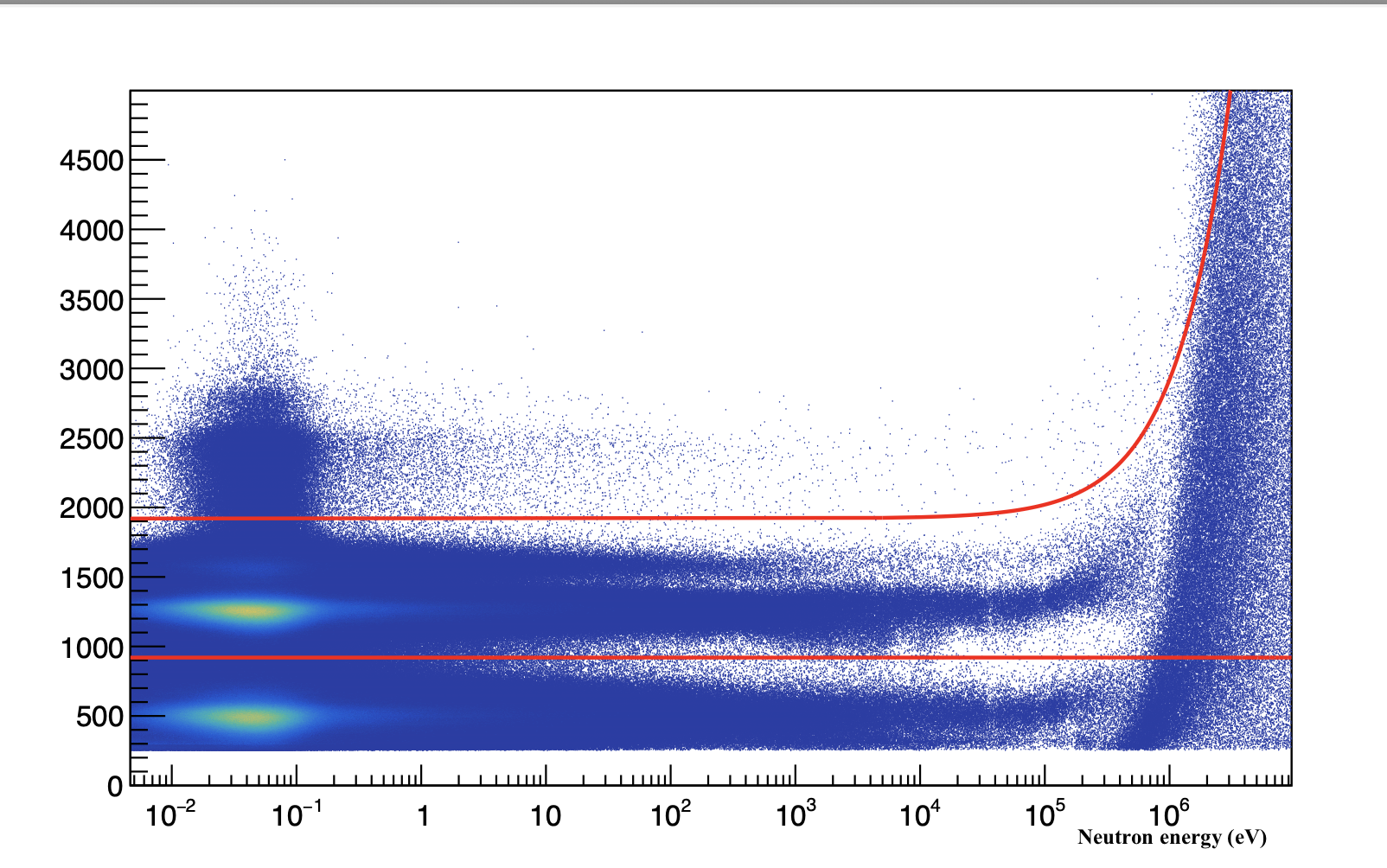
|
| Attachment 2: CountsBYsim_10B.pdf
|
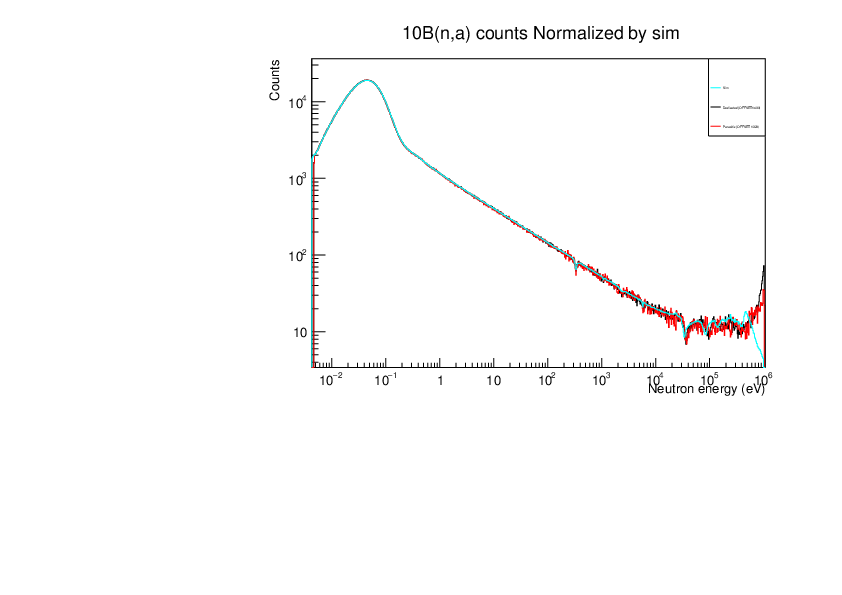
|
| Attachment 3: CountsBYsim_LiF.pdf
|

|
| Attachment 4: CountsperProton_BA.pdf
|

|
| Attachment 5: CountsperProton_BB.pdf
|
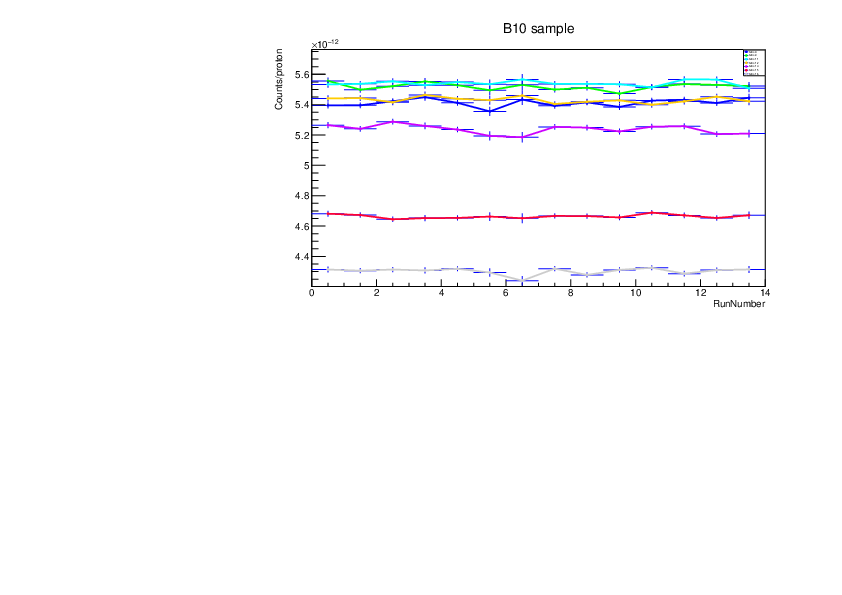
|
| Attachment 6: CountsperProton_LiA.pdf
|

|
| Attachment 7: CountsperProton_LiB.pdf
|

|
| Attachment 8: LiF-h2d.png
|
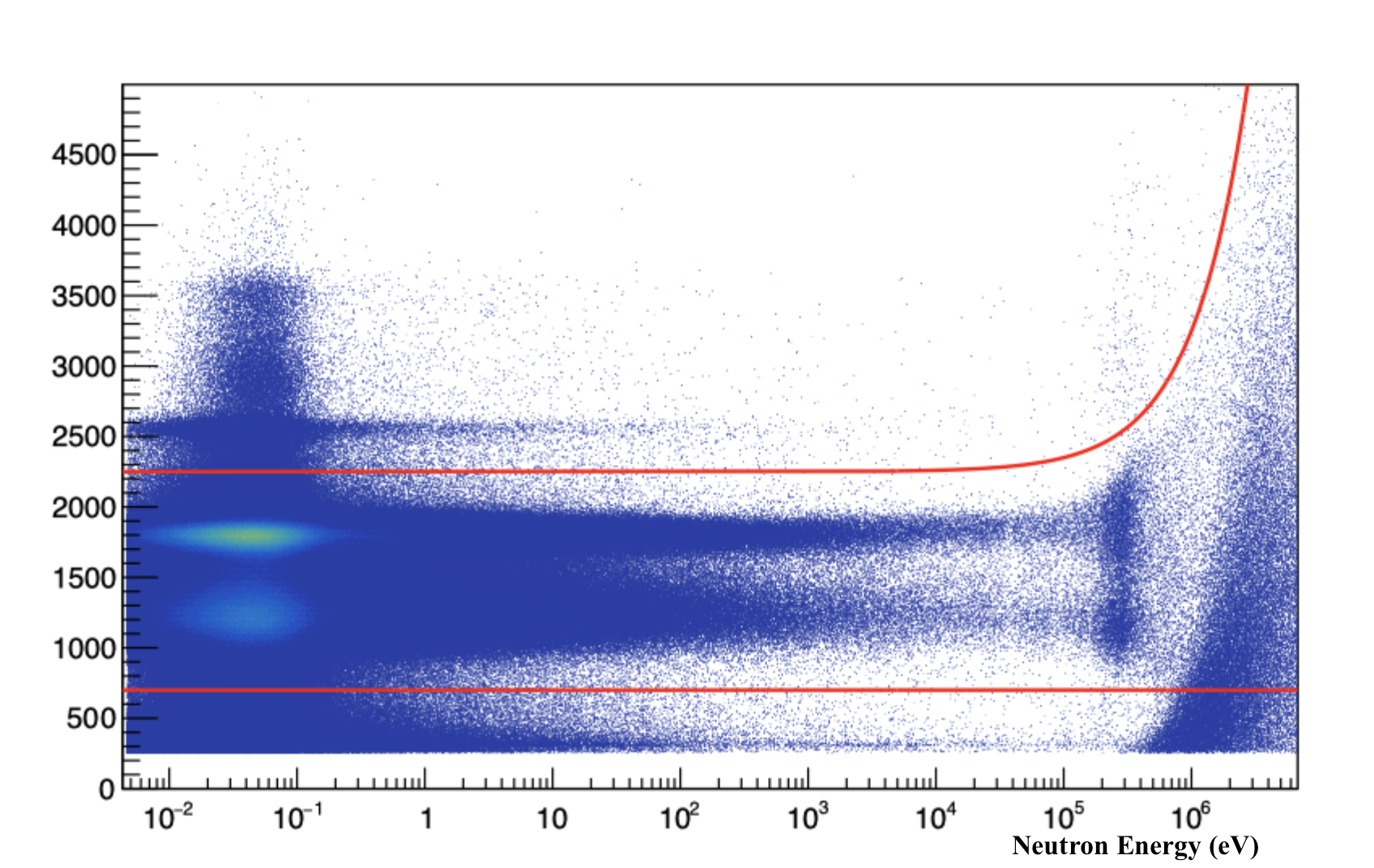
|
| Attachment 9: noDT_DEDICATED.pdf
|

|
| Attachment 10: noDT_dedicatedB.pdf
|
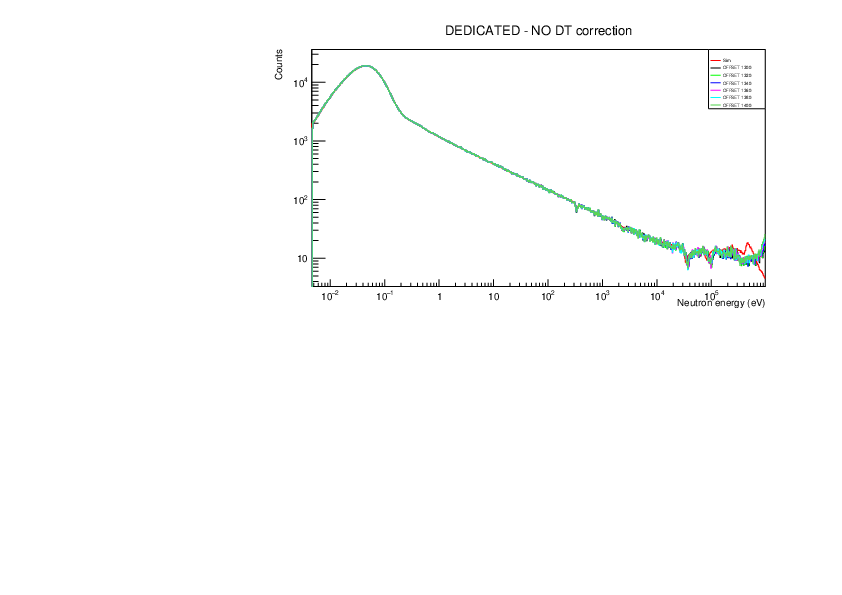
|
| Attachment 11: noDT_parasiticB.pdf
|

|
| Attachment 12: noDT_parasiticLi.pdf
|
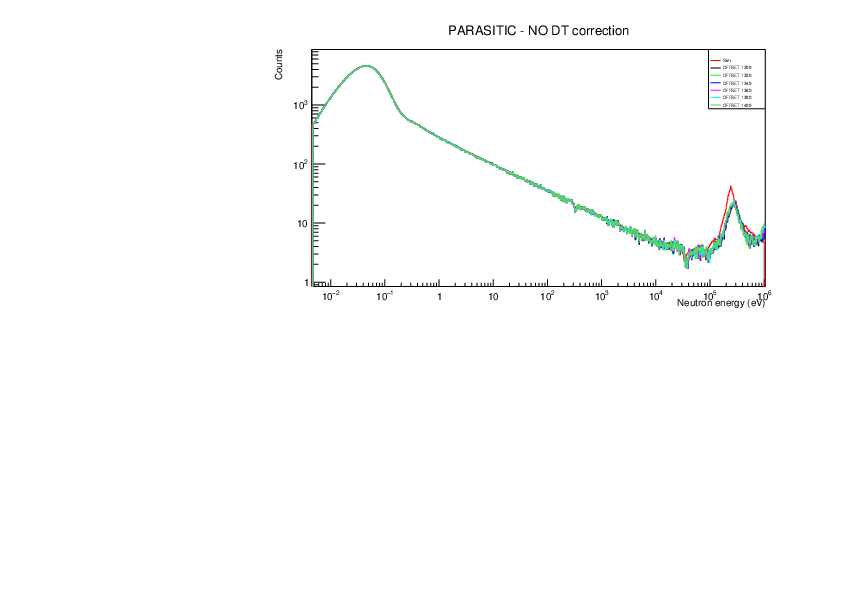
|
| Attachment 13: s1.pdf
|
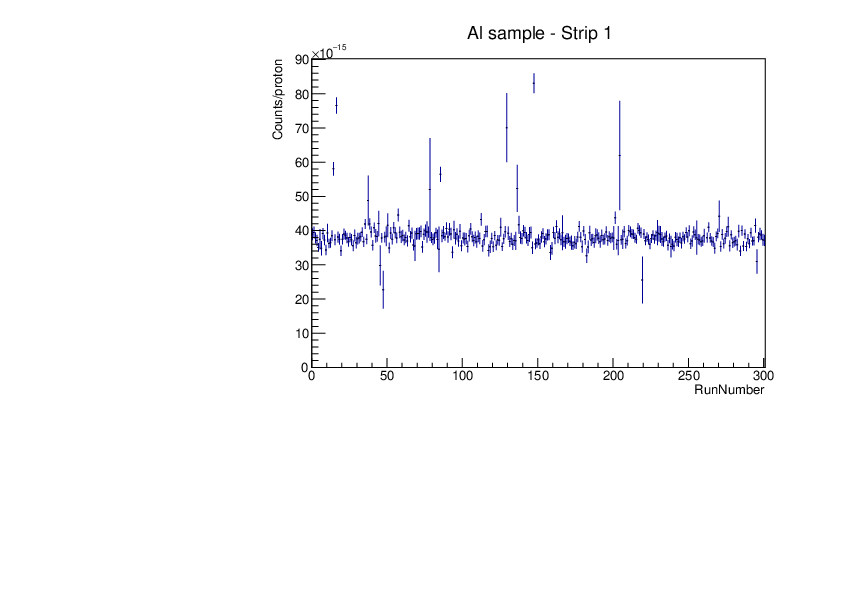
|
| Attachment 14: s2.pdf
|
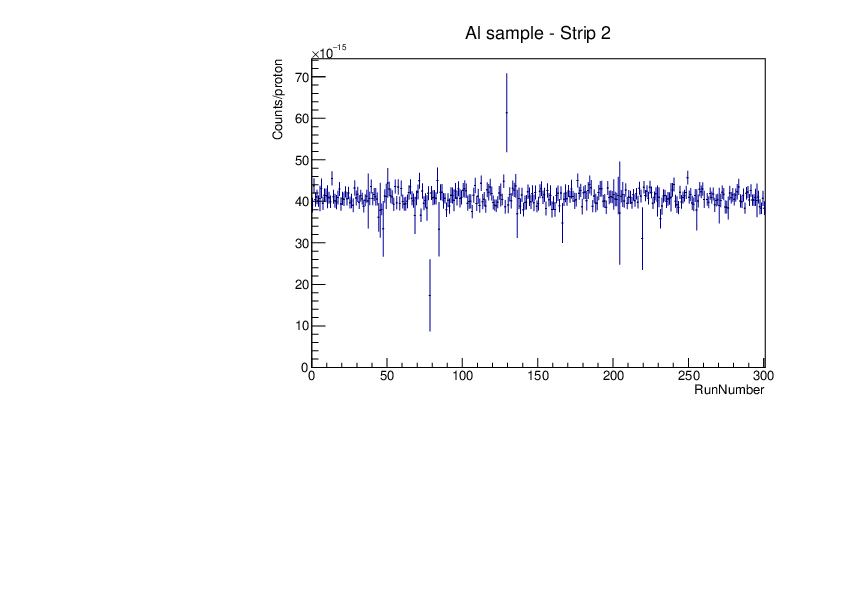
|
| Attachment 15: s3.pdf
|
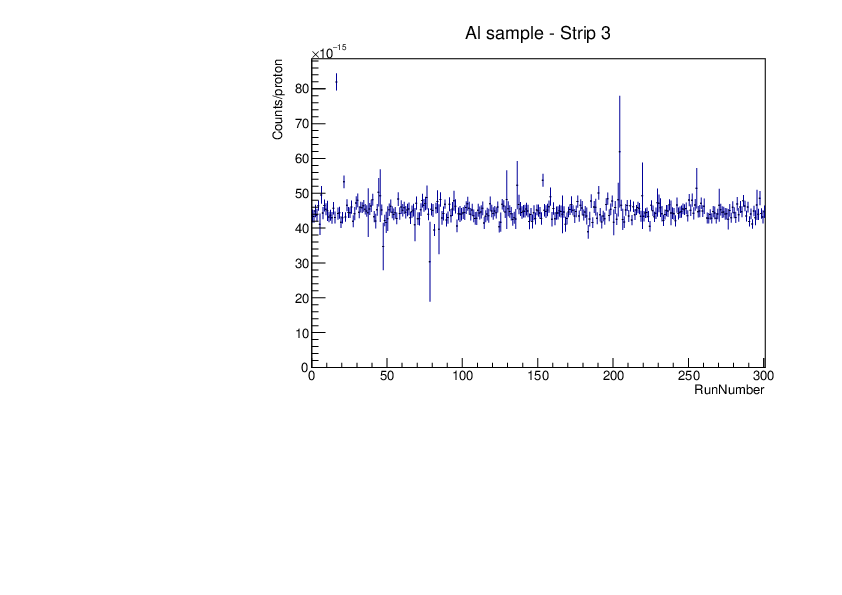
|
| Attachment 16: s4.pdf
|
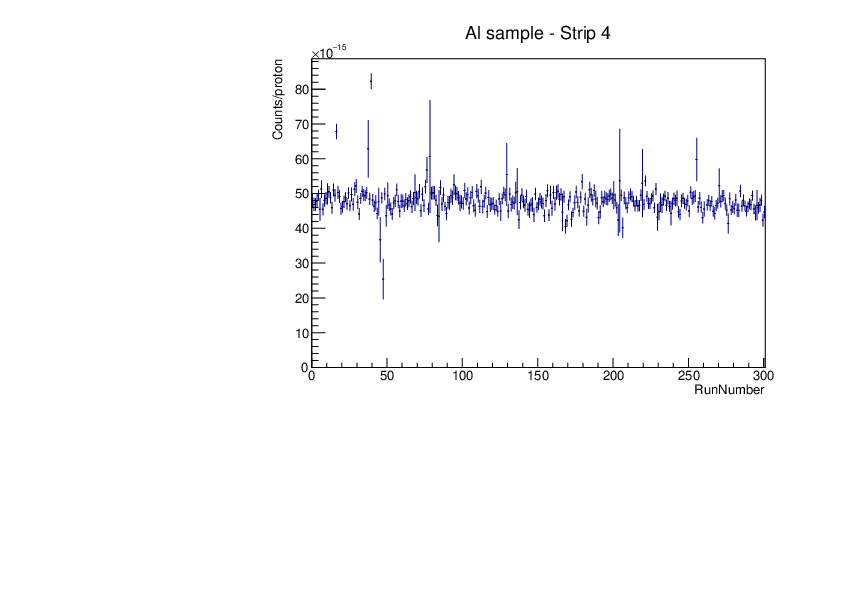
|
| Attachment 17: s6.pdf
|
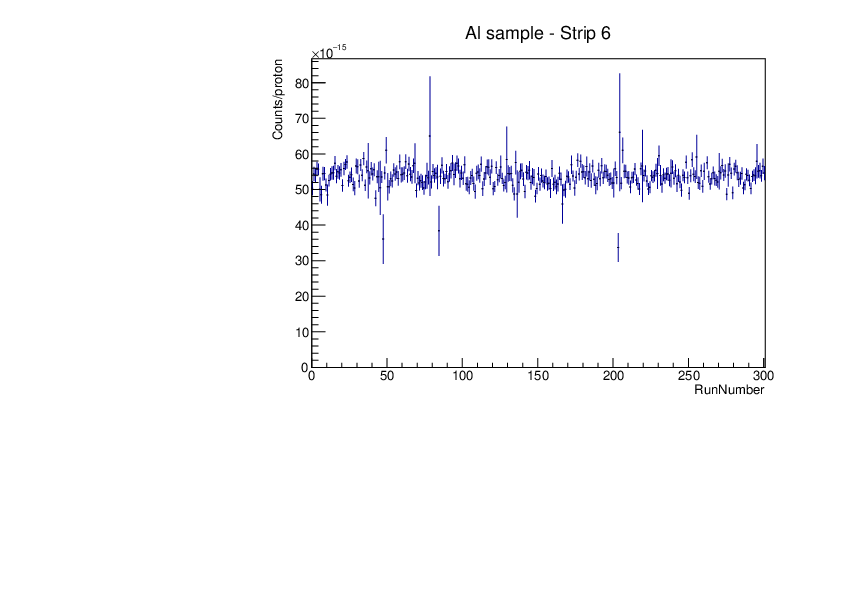
|
| Attachment 18: s7.pdf
|

|
| Attachment 19: s8.pdf
|

|
| Attachment 20: s9.pdf
|
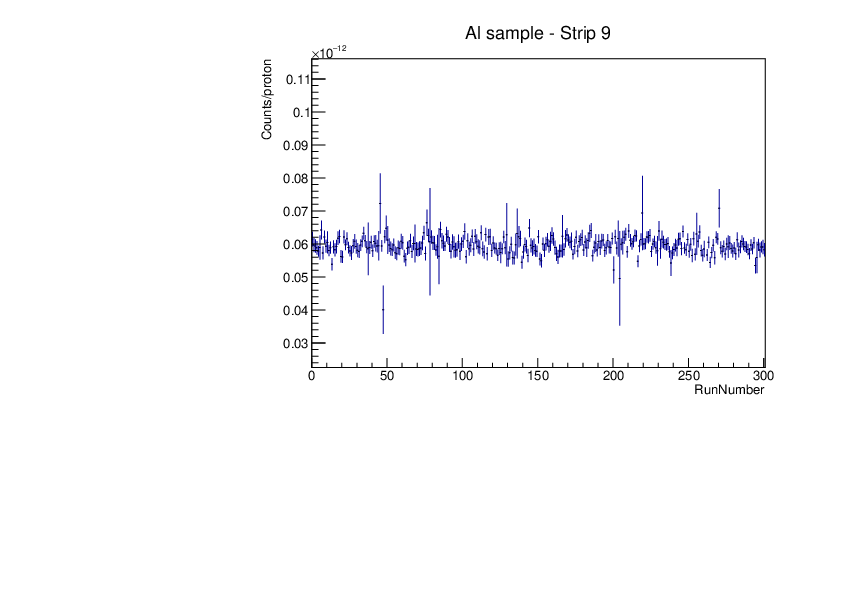
|
| Attachment 21: s11.pdf
|
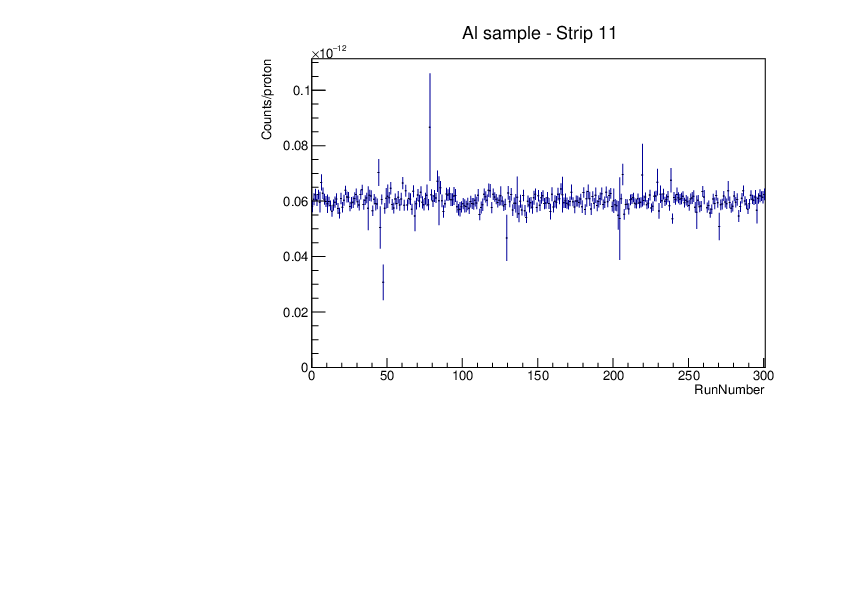
|
| Attachment 22: s12.pdf
|
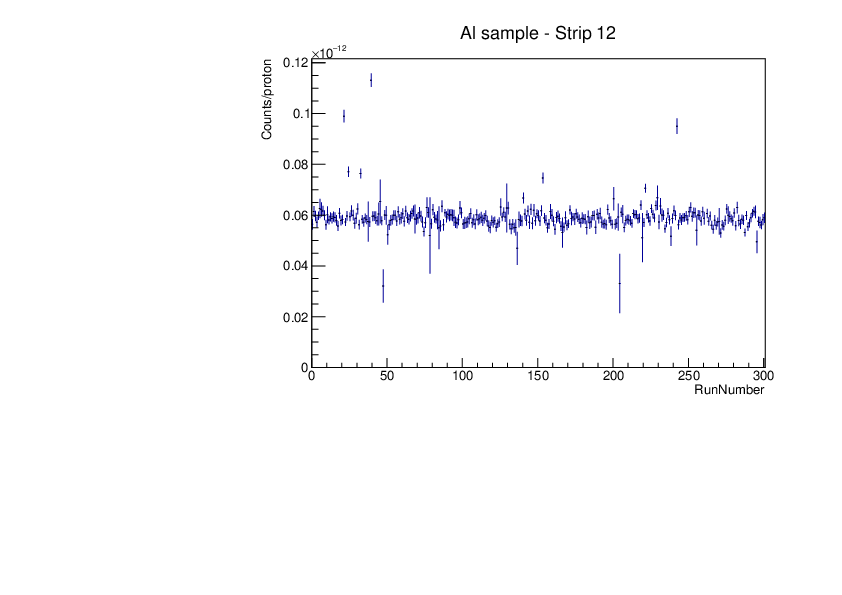
|
| Attachment 23: s13.pdf
|
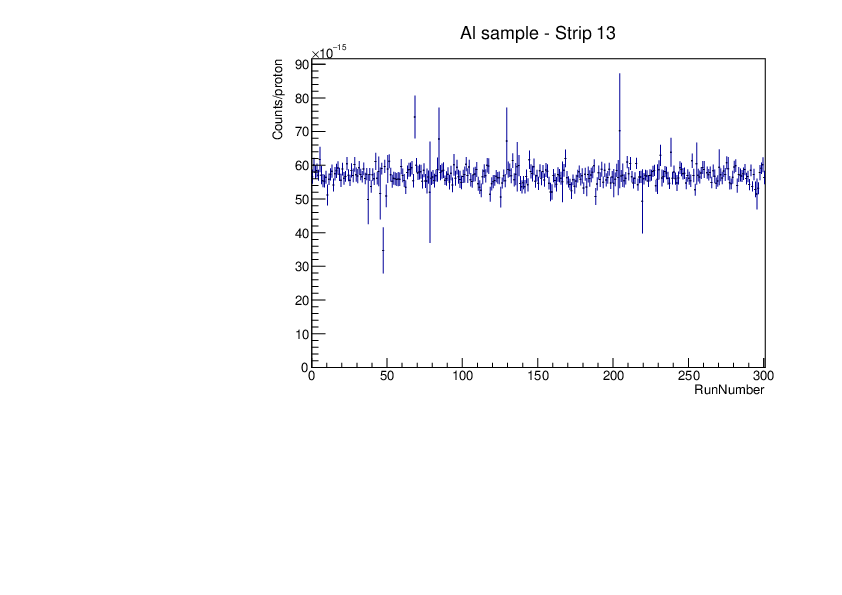
|
| Attachment 24: s15.pdf
|
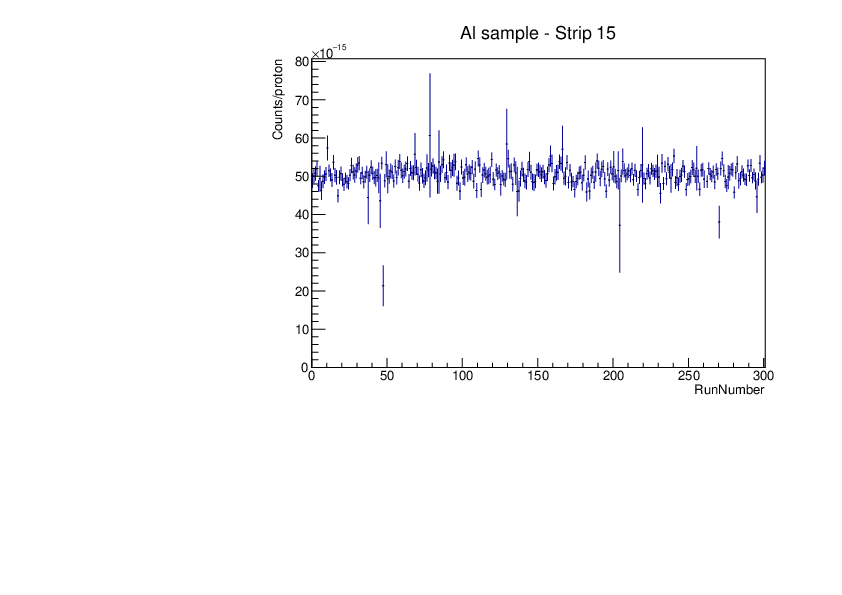
|
| Attachment 25: s16.pdf
|
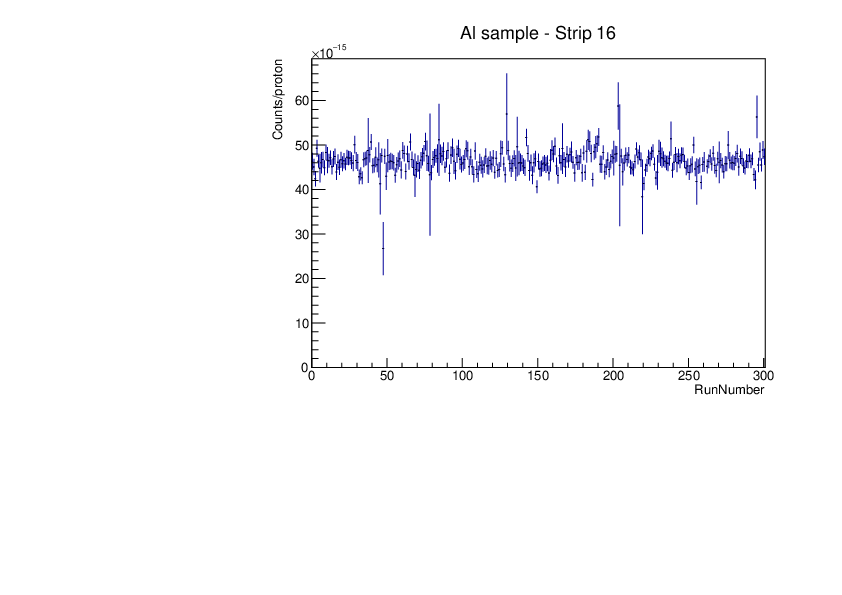
|
| Attachment 26: sall_B10.pdf
|
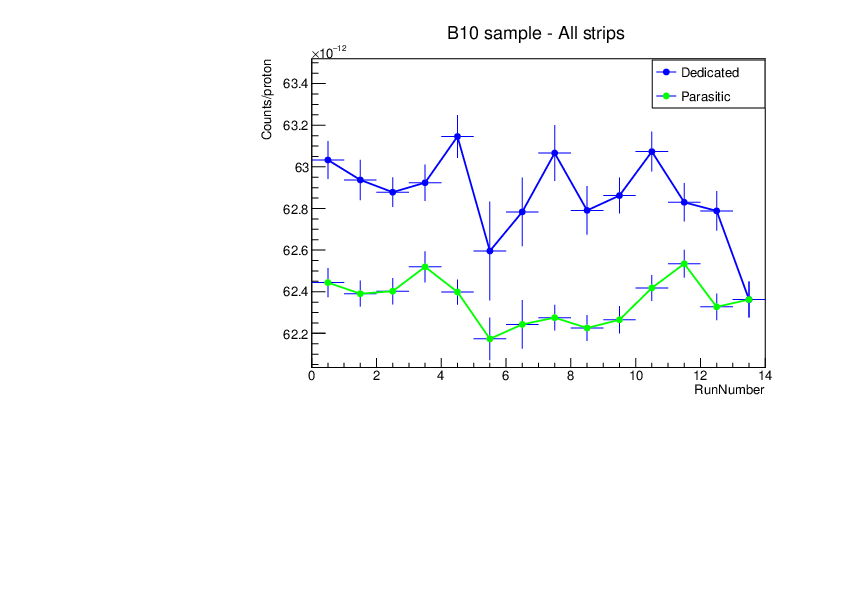
|
| Attachment 27: sall_LiF.pdf
|

|
| Attachment 28: XB10.pdf
|
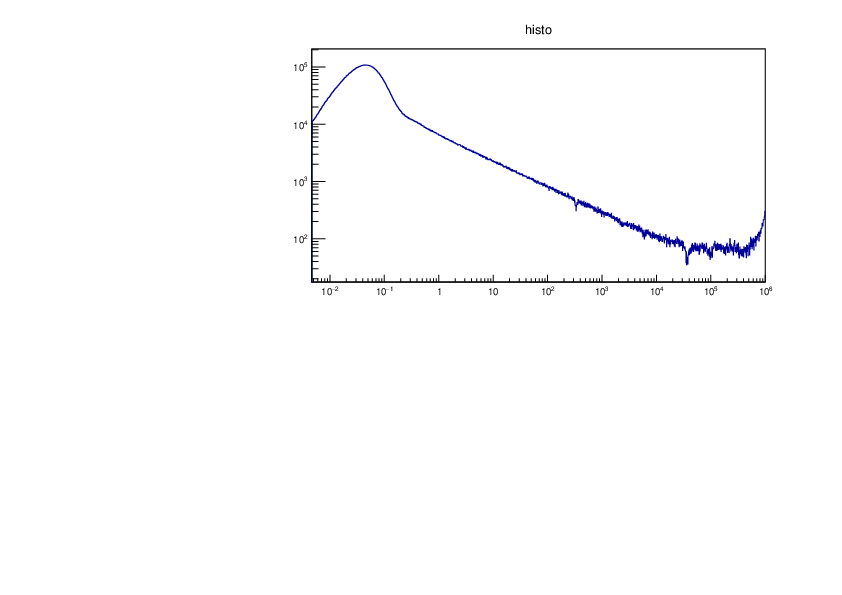
|
| Attachment 29: XLi.pdf
|

|
|
104
|
Thu Sep 18 14:11:29 2025 |
CLW, EO | New processing |
Comparison strip 6 amplitude spectra anew (red) vs (old) processing (Screenshot). Slight shift in amplitude and slightly less counts with new processing in t+alpha peaks (1% level). This could be either due to less noise background, shift in neutron energy calibration (amplitude spectra shown with a cut of 100 keV). pdf plot shows new vs old for neutron energy vs counts. only minor differences at low neutron energy, new processing makes spectra cleaner at higher energy.
Shape of the Li 240 keV resonance is shifted in new processing - either due to different offset in tof-ene calibration, or time stamp for signals in one of the processing versions is wrong. Need a new comparison to simulated spectra. |
| Attachment 1: Screenshot_2025-09-18_at_12.27.35.png
|
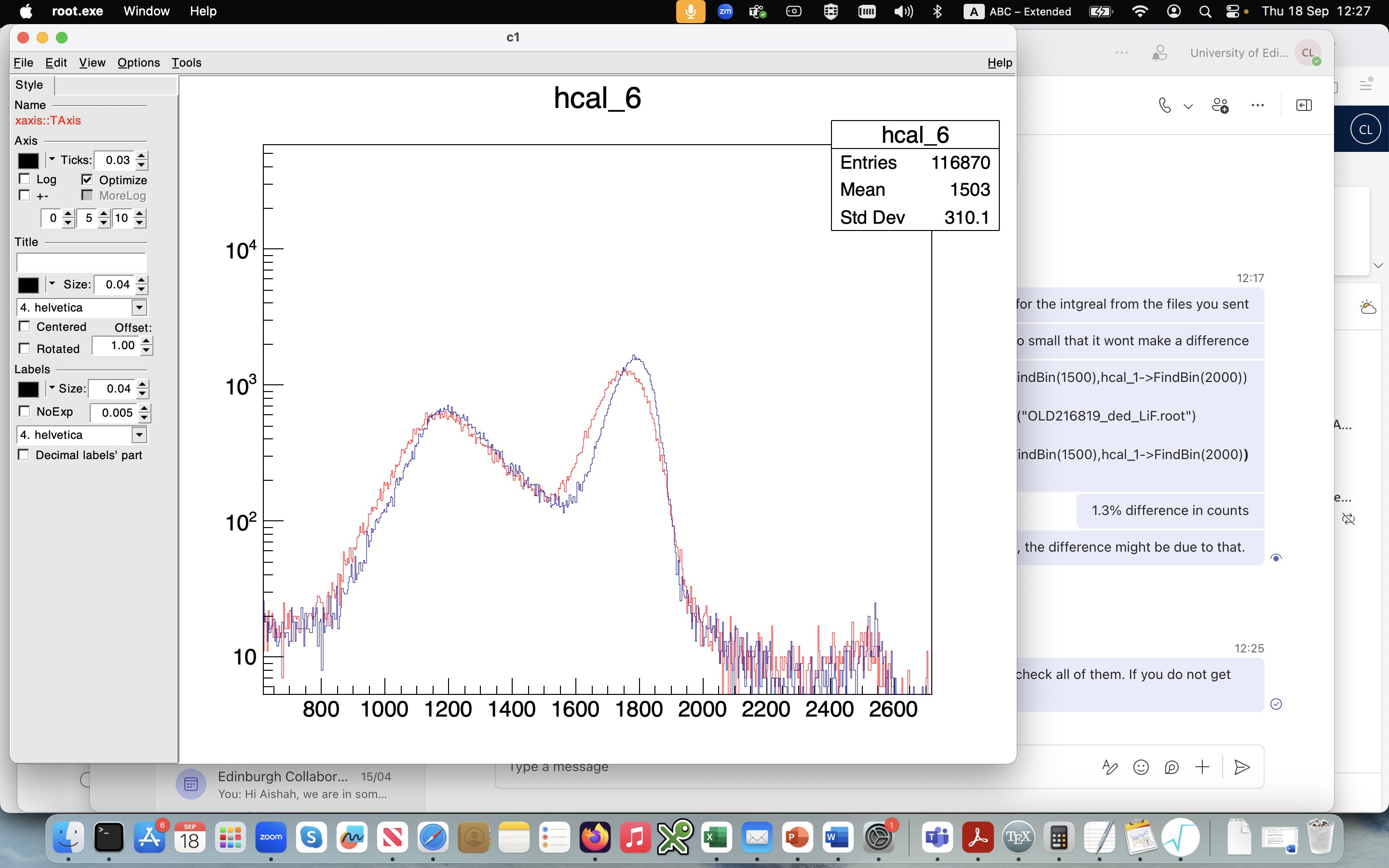
|
| Attachment 2: newprocessing.pdf
|
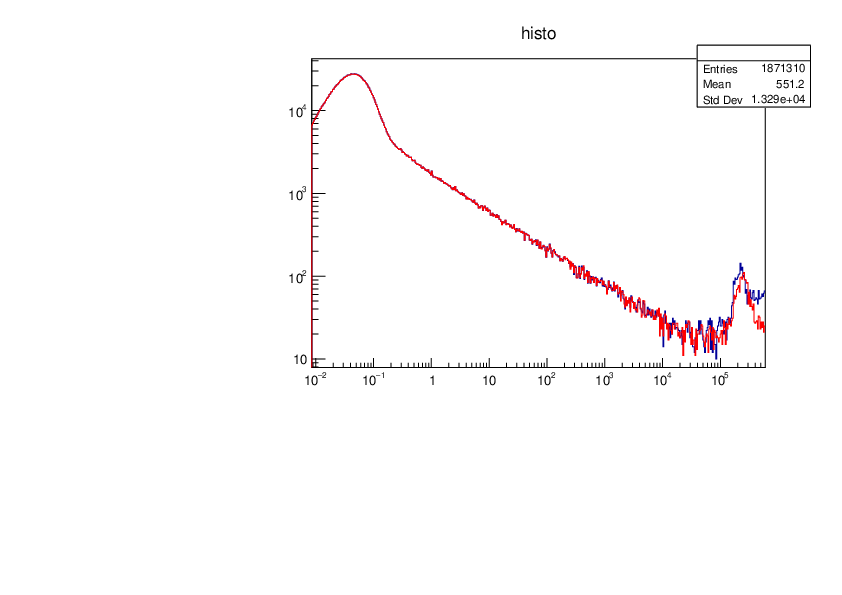
|
|
103
|
Tue Sep 9 13:59:29 2025 |
Selin | UserInputs for Processing |
This is the UserINputs for the processing of Ca41. The dead time used for the processing has been 2us. Further processing of a B run with dead time set to 0 (as seen in the inputs) showed that the dead time should be around 1 us. |
| Attachment 1: UserInput_Silicons_Ca41.h
|
DETECTOR SPECIFIC PARAMETERS (Lines may be commented with '#' sign!)
===================================================================================================================================================================================================================================
DETECTOR DETECTOR DETECTOR STEP TIMING MIXED EXPAND SMOOTHING TIME G-FLASH G-FLASH G-FLASH G-FLASH BASELINE BASELINE AMPLITUDE AMPLITUDE AREA/AMP. AREA/AMP. SIGNAL WIDTH SIGNAL WIDTH NUMBER OF PULSE SHAPE
NAME NUMBER CLASS SIZE FILTER POLARITY PULSES FILTER LIMIT OPTION THRESHOLD MIN_WIDTH WINDOW OPTION FILTER OPTION THRESHOLD LOW THR. HIGH THR. LOW THR. HIGH THR. PULSE SHAPES ADDRESS
~~~~~~~~~~~~~~~~~~~~~~~~~~~~~~~~~~~~~~~~~~~~~~~~~~~~~~~~~~~~~~~~~~~~~~~~~~~~~~~~~~~~~~~~~~~~~~~~~~~~~~~~~~~~~~~~~~~~~~~~~~~~~~~~~~~~~~~~~~~~~~~~~~~~~~~~~~~~~~~~~~~~~~~~~~~~~~~~~~~~~~~~~~~~~~~~~~~~~~~~~~~~~~~~~~~~~~~~~~~~~~~~~~~
PKUP 0 PSA 350/6 0 0 3 100 100000 0 100. 1. 0 -1 300 0 100 0.0 2000 1 4000 0
SILI 1 PSA 500 0 0 0 0 1e9/1e9 0 500. 0. 0 1/70 1e4 1 200 300 2000 500
4000 0
SILI 2 PSA 500 0 0 0 0 1e9/1e9 0 500. 0. 0 1/70 1e4 1 200 300 2000 500
4000 0
SILI 3 PSA 500 0 0 0 0 1e9/1e9 0 500. 0. 0 1/70 1e4 1 200 300 2000 500
4000 0
SILI 4 PSA 500 0 0 0 0 1e9/1e9 0 500. 0. 0 1/70 1e4 1 200 300 2000 500
4000 0
#################################
# MWD PARAMETERS V6.2 #####
# Date: 10-Aug-2023 #####
#################################
#################################
#Name Strip Threshold Polarity PoleZeroCorr DeconWindow AvergWin MAWindows gain/offset Gamma_Threshold Z_Threshold fixed Dead time(ns) time_diff_baselne tailtime time_const
DEED 1 MWD 150 -1 5E5 100 40 1 19 1.0/0.0 100 2000 0 2100 2 20
DEED 2 MWD 150 -1 5E5 100 40 1 19 1.0/0.0 100 2000 0 2100 2 20
DEED 3 MWD 150 -1 5E5 100 40 1 19 1.0/0.0 100 2000 0 2100 2 20
DEED 4 MWD 150 -1 5E5 100 40 1 19 1.0/0.0 100 2000 0 2100 2 20
DEED 5 MWD 150 -1 5E5 100 40 1 19 1.0/0.0 100 2000 0 2100 2 20
DEED 6 MWD 150 -1 5E5 100 40 1 19 1.0/0.0 100 2000 0 2100 2 20
DEED 7 MWD 150 -1 5E5 100 40 1 19 1.0/0.0 100 2000 0 2100 2 20
DEED 8 MWD 150 -1 5E5 100 40 1 19 1.0/0.0 100 2000 0 2100 2 20
DEED 9 MWD 150 -1 5E5 100 40 1 19 1.0/0.0 100 2000 0 2100 2 20
DEED 10 MWD 150 -1 5E5 100 40 1 19 1.0/0.0 100 2000 0 2100 2 20
DEED 11 MWD 150 -1 5E5 100 40 1 19 1.0/0.0 100 2000 0 2100 2 20
DEED 12 MWD 150 -1 5E5 100 40 1 19 1.0/0.0 100 2000 0 2100 2 20
DEED 13 MWD 150 -1 5E5 100 40 1 19 1.0/0.0 100 2000 0 2100 2 20
DEED 14 MWD 150 -1 5E5 100 40 1 19 1.0/0.0 100 2000 0 2100 2 20
DEED 15 MWD 150 -1 5E5 100 40 1 19 1.0/0.0 100 2000 0 2100 2 20
DEED 16 MWD 150 -1 5E5 100 40 1 19 1.0/0.0 100 2000 0 2100 2 20
DEED 17 MWD 150 1 5E5 100 40 1 19 1.0/0.0 100 2000 0 2100 2 20
DEED 18 MWD 150 1 5E5 100 40 1 19 1.0/0.0 100 2000 0 2100 2 20
DEED 19 MWD 150 1 5E5 100 40 1 19 1.0/0.0 100 2000 0 2100 2 20
DEED 20 MWD 150 1 5E5 100 40 1 19 1.0/0.0 100 2000 0 2100 2 20
DEED 21 MWD 150 1 5E5 100 40 1 19 1.0/0.0 100 2000 0 2100 2 20
DEED 22 MWD 150 1 5E5 100 40 1 19 1.0/0.0 100 2000 0 2100 2 20
DEED 23 MWD 150 1 5E5 100 40 1 19 1.0/0.0 100 2000 0 2100 2 20
DEED 24 MWD 150 1 5E5 100 40 1 19 1.0/0.0 100 2000 0 2100 2 20
DEED 25 MWD 150 1 5E5 100 40 1 19 1.0/0.0 100 2000 0 2100 2 20
DEED 26 MWD 150 1 5E5 100 40 1 19 1.0/0.0 100 2000 0 2100 2 20
DEED 27 MWD 150 1 5E5 100 40 1 19 1.0/0.0 100 2000 0 2100 2 20
DEED 28 MWD 150 1 5E5 100 40 1 19 1.0/0.0 100 2000 0 2100 2 20
DEED 29 MWD 150 1 5E5 100 40 1 19 1.0/0.0 100 2000 0 2100 2 20
DEED 30 MWD 150 1 5E5 100 40 1 19 1.0/0.0 100 2000 0 2100 2 20
DEED 31 MWD 150 1 5E5 100 40 1 19 1.0/0.0 100 2000 0 2100 2 20
DEED 32 MWD 150 1 5E5 100 40 1 19 1.0/0.0 100 2000 0 2100 2 20
|
|
102
|
Mon Aug 25 10:47:44 2025 |
Selin | Pulser Test - Week 1 and 2 |
This is the pulser test between runs 221376 and 221377 (06/08/2025) which is in pink and 221439 and 221440 (13/08/2025) which is in cyan.
The back strips seem to be affected by gain as the pulser amplitudes are shifted. |
| Attachment 1: pulserfront6.pdf
|
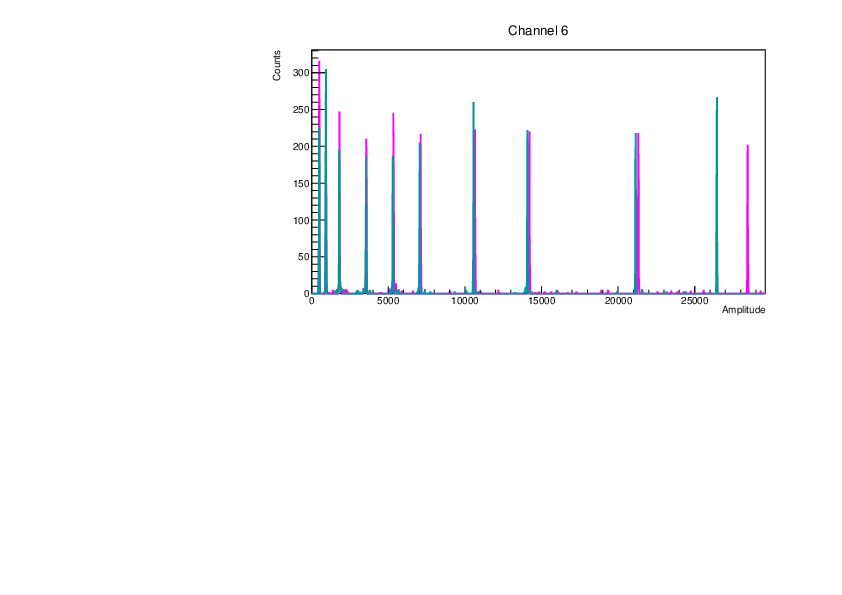
|
| Attachment 2: pulserfront14.pdf
|

|
| Attachment 3: pulserback27.pdf
|
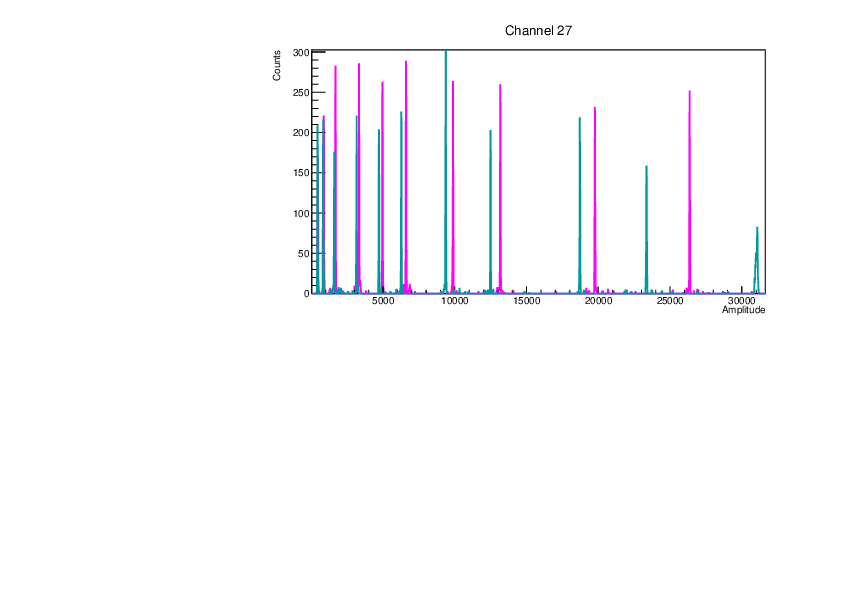
|
| Attachment 4: pulserback30.pdf
|
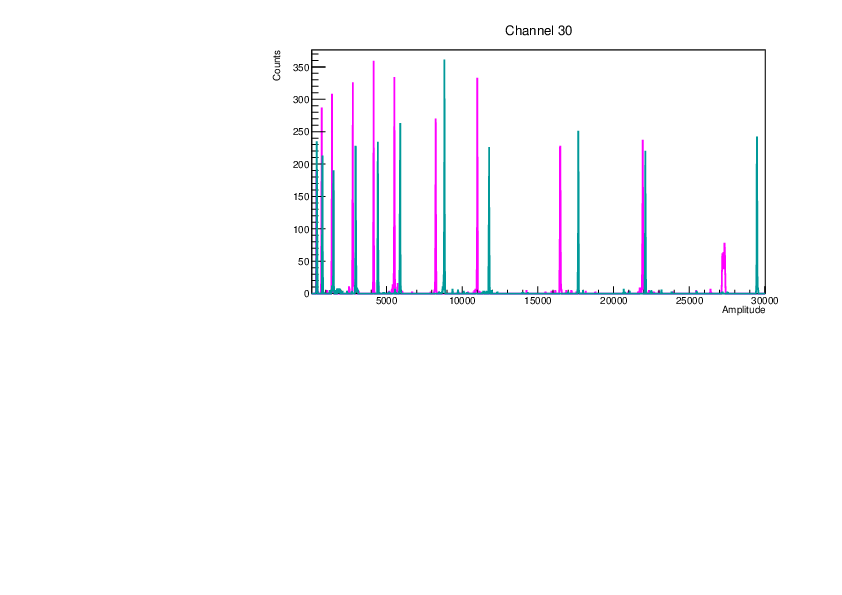
|
|
101
|
Thu Aug 21 16:19:43 2025 |
Emmanuel | Checking DEED 11 with the Pulser |
We checked DEED 11 with the Pulser and it was still unresponsive (See screenshot).
Next, we will change the LEMO cables and do another Pulser Test. |
| Attachment 1: DEED11_Pulser.png
|
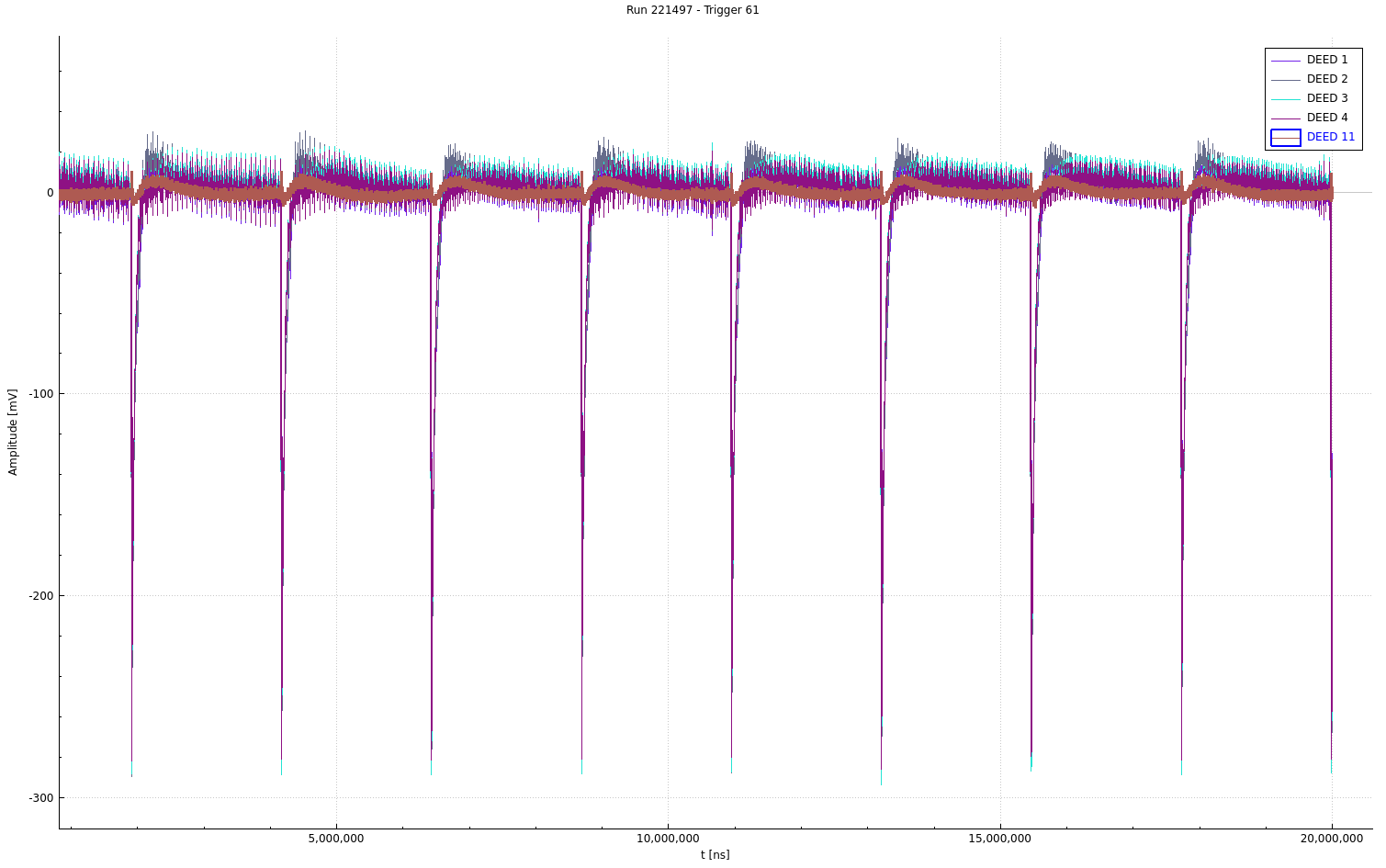
|
|
100
|
Mon Aug 18 09:19:27 2025 |
Emmanuel | DEED 11 NO Gamma Flash Signal |
We observed that DEED11 no longer have Gamma flash signals.
Before the drop, it had some weird flunctuations.
Attached are the plots.
We will check with the pulser tomorrow.
|
| Attachment 1: DEED11_18AUG2025_C.png
|

|
| Attachment 2: DEED11_17AUG2025_B.png
|

|
| Attachment 3: DEED11_17AUG2025_D.png
|

|
| Attachment 4: DEED11_17AUG2025.png
|
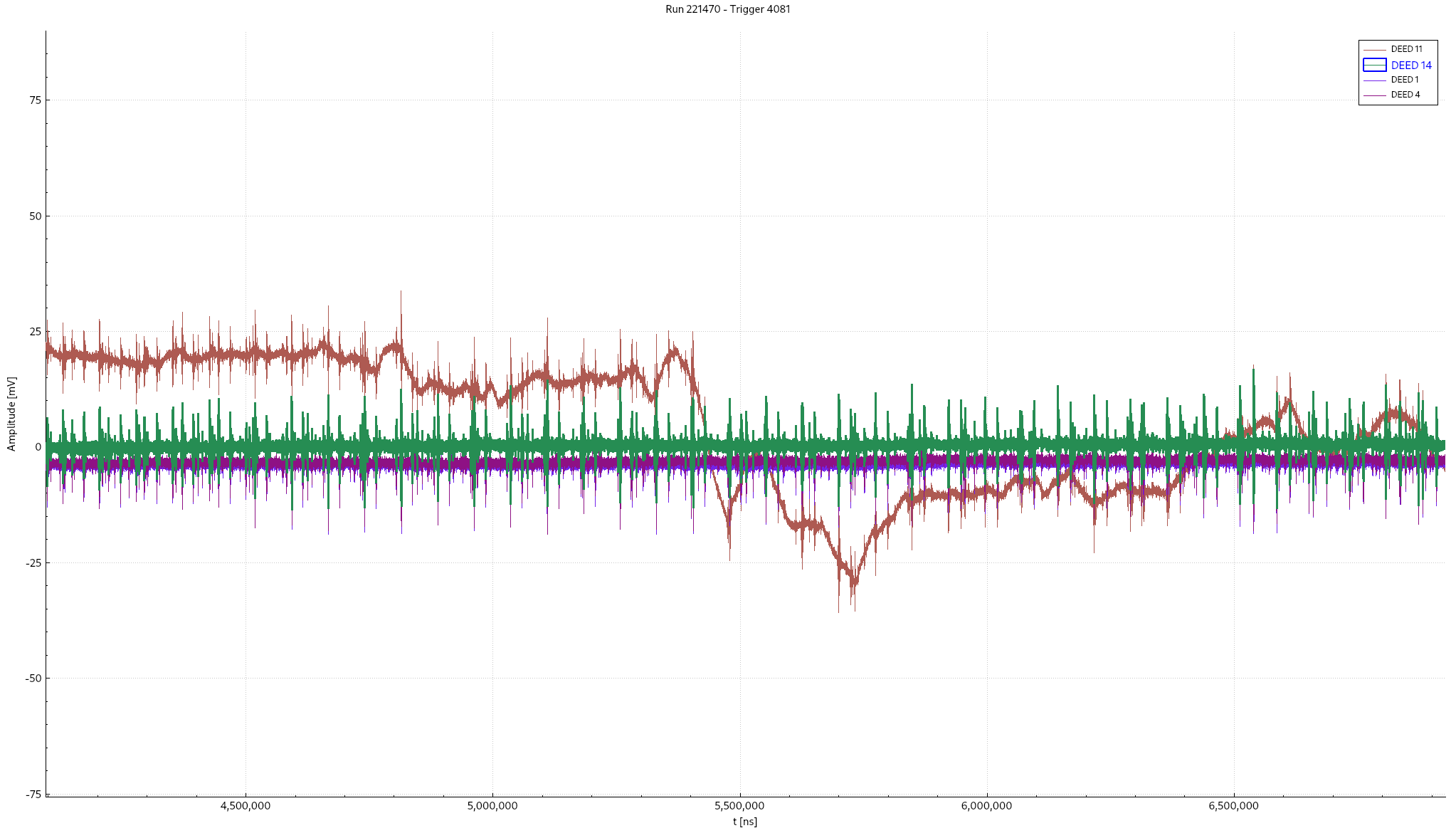
|
| Attachment 5: DEED11_18AUG2025.png
|

|
|
99
|
Wed Aug 6 11:20:52 2025 |
Selin | Pulser Test |
The pulser test was performed with a frequency of 500 Hz and with voltage settings of: 2V, 1.6V, 1.2V, 0.8V, 0.6V, 0.4V, 0.3V, 0.2V, 0.1V, 0.05V, 0.025V.
The run was started with calibration settings and then the voltage was changed every 2.5-3 minutes.
From the attached plots, it can be seen that everything is as expected. This means that the pulser multipolarity is consistent with front and back strips, pulser signals are more frequent and the pulser amplitude decreases with decreasing V.
The front and back pulser tests have been done with separate runs and the settings have been reverted to their original values (100 Hz, 2V, pulser is off). |
| Attachment 1: front_2V.png
|

|
| Attachment 2: front_less2V.png
|

|
| Attachment 3: front_less1V.png
|
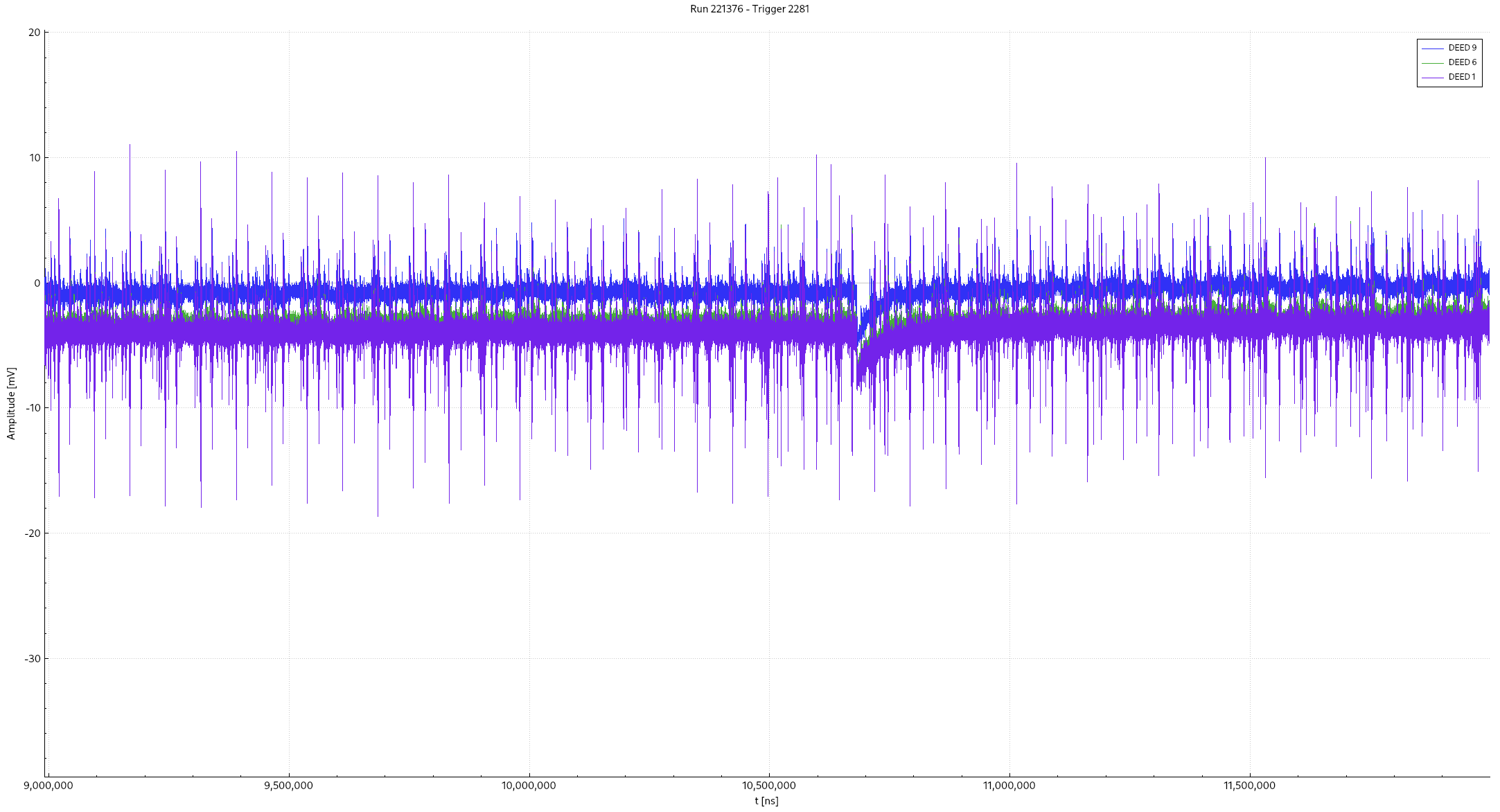
|
| Attachment 4: back_2V.png
|

|
|
98
|
Mon Aug 4 16:45:43 2025 |
Selin | Boron-3 Consistency Check |
These are the consistency checks done for Boron-3 sample.
Please note that the back strips for the first run are mismatched due to the settings in DAQ. |
| Attachment 1: B3-1-8.png
|
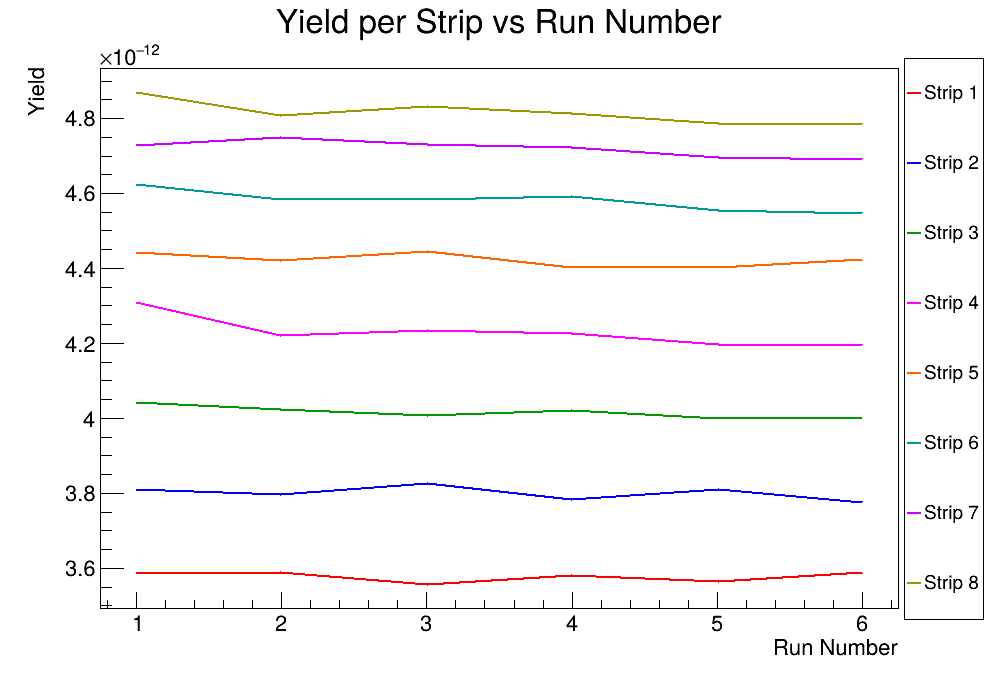
|
| Attachment 2: B3-9-16.png
|
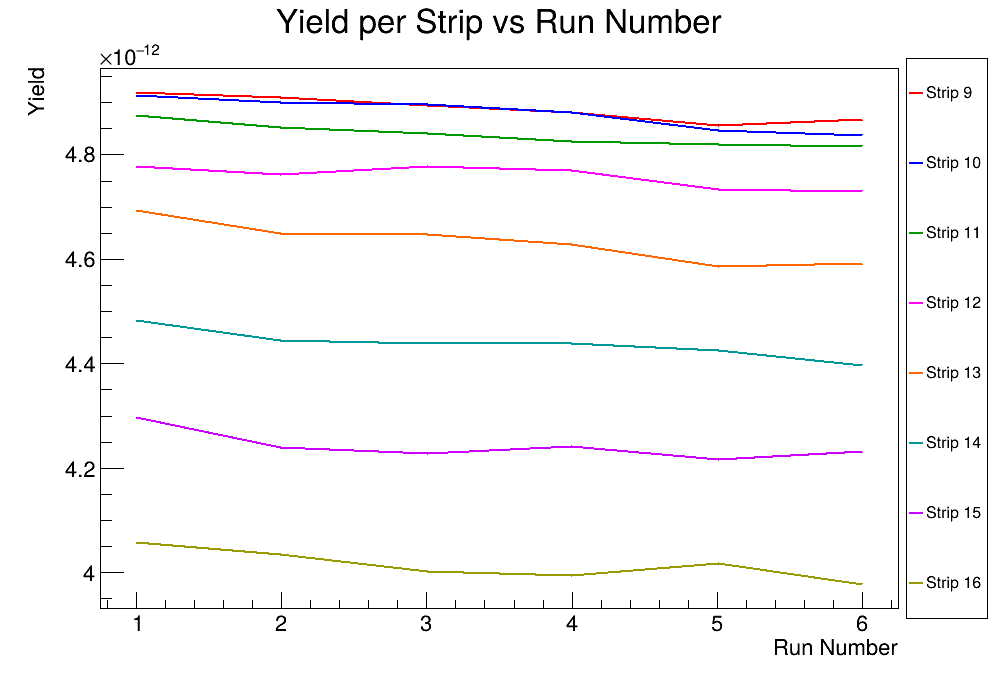
|
| Attachment 3: B3-17-24.png
|
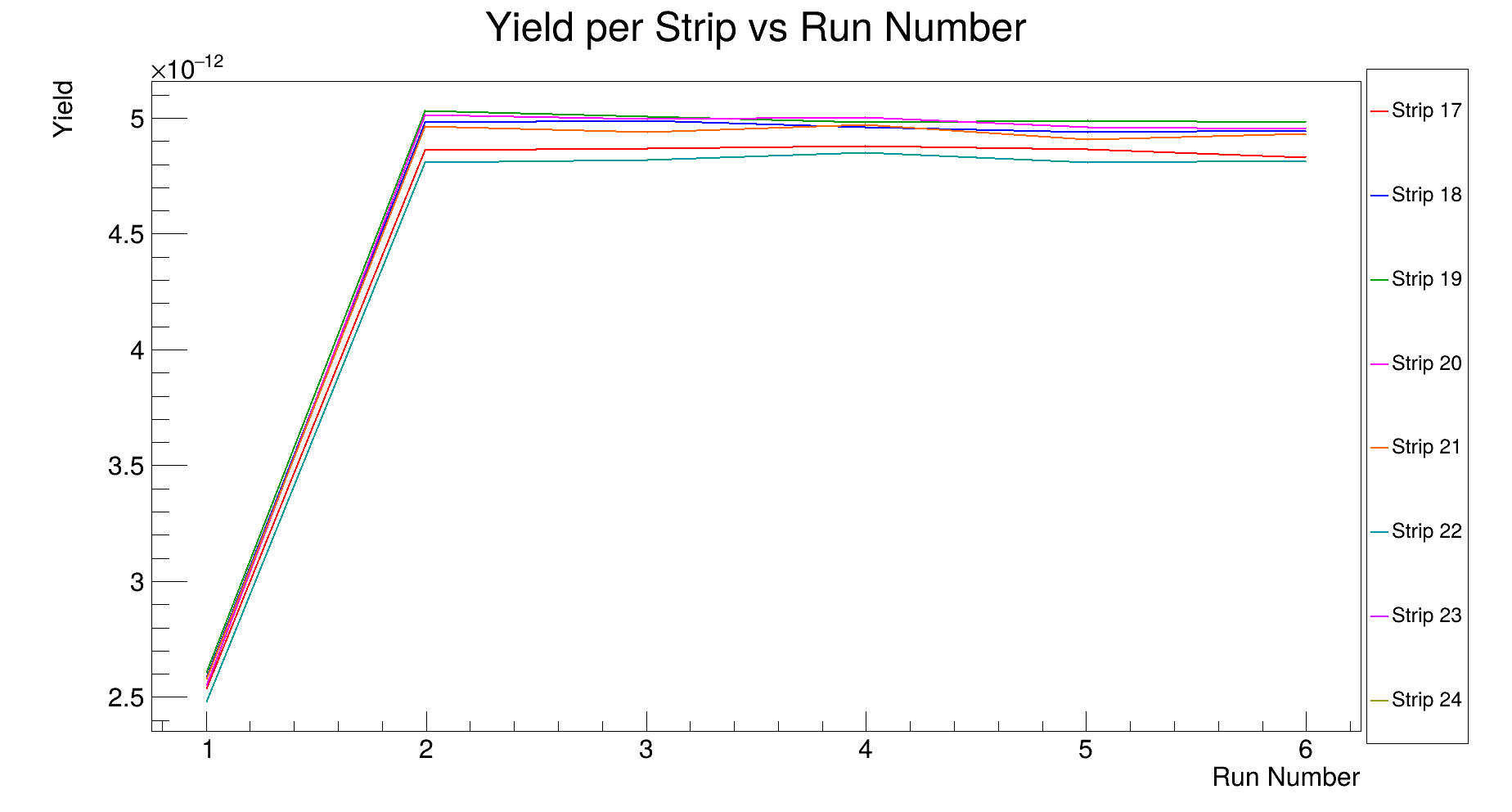
|
| Attachment 4: B3-25-32.png
|

|
|
97
|
Mon Aug 4 16:44:06 2025 |
Selin | Boron-1 Consistency Check |
These are the consistency checks done for Boron-1 sample. |
| Attachment 1: B1-1-8.png
|
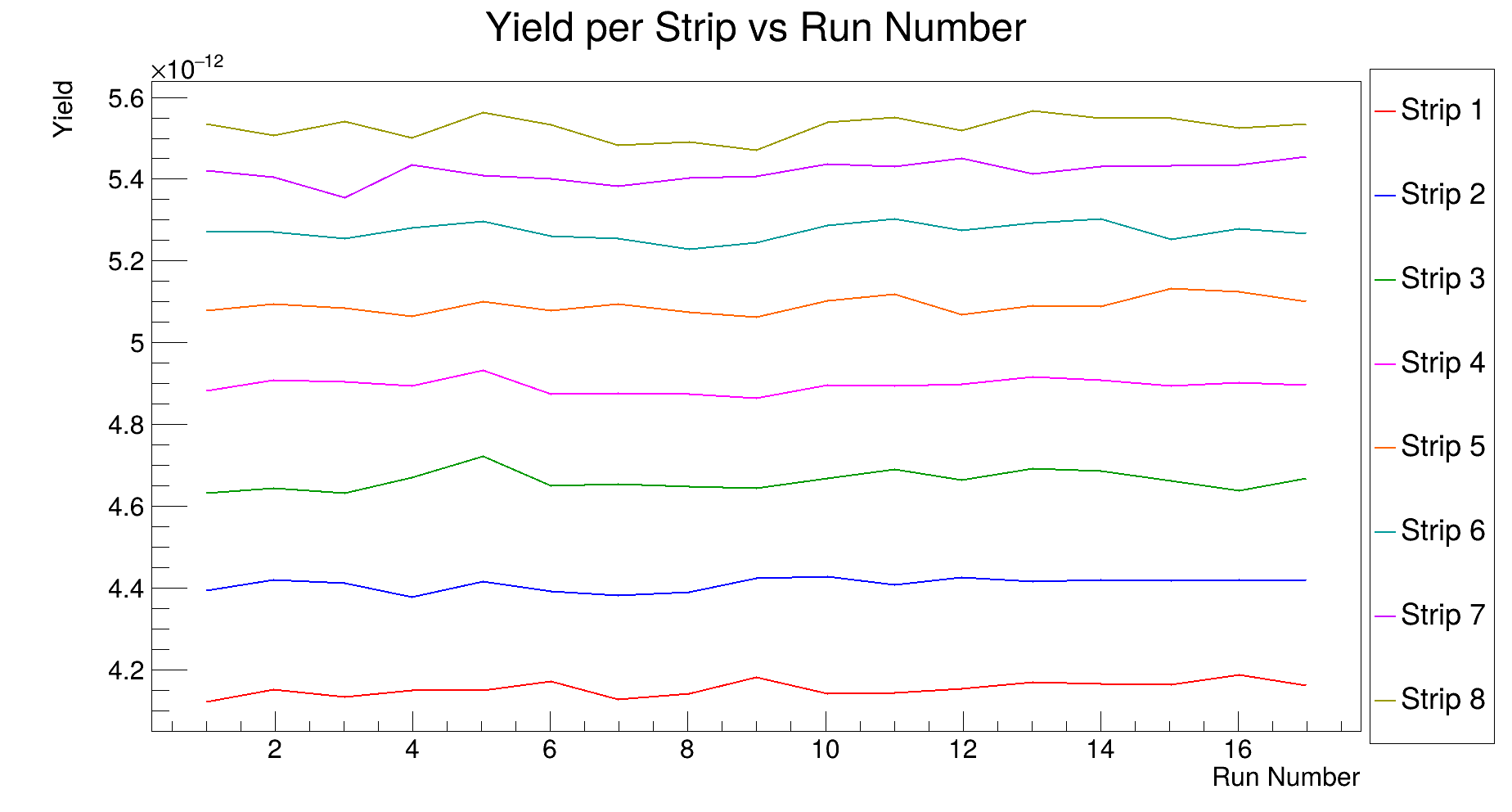
|
| Attachment 2: B1-9-16.png
|

|
| Attachment 3: B1-17-24.png
|

|
| Attachment 4: B1-25-32.png
|

|
|
96
|
Mon Aug 4 16:32:56 2025 |
Selin | Lithium Consistency Check |
These are the consistency checks done for Lithium sample.
Please note that in the earlier runs, the cables 22 and 23 were switched. |
| Attachment 1: Li1-8.png
|

|
| Attachment 2: Li9-16.png
|
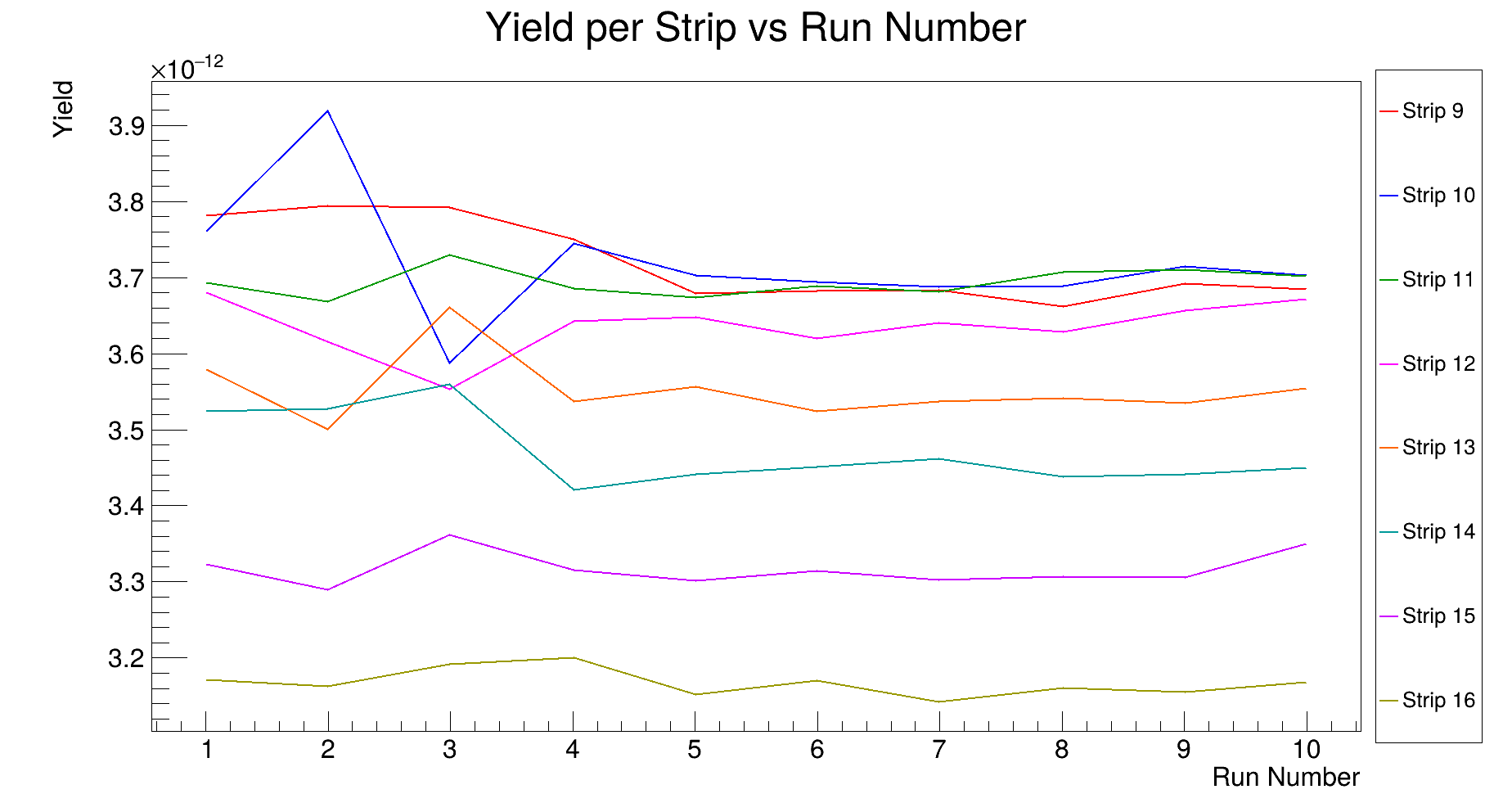
|
| Attachment 3: Li17-24.png
|

|
| Attachment 4: Li25-32.png
|
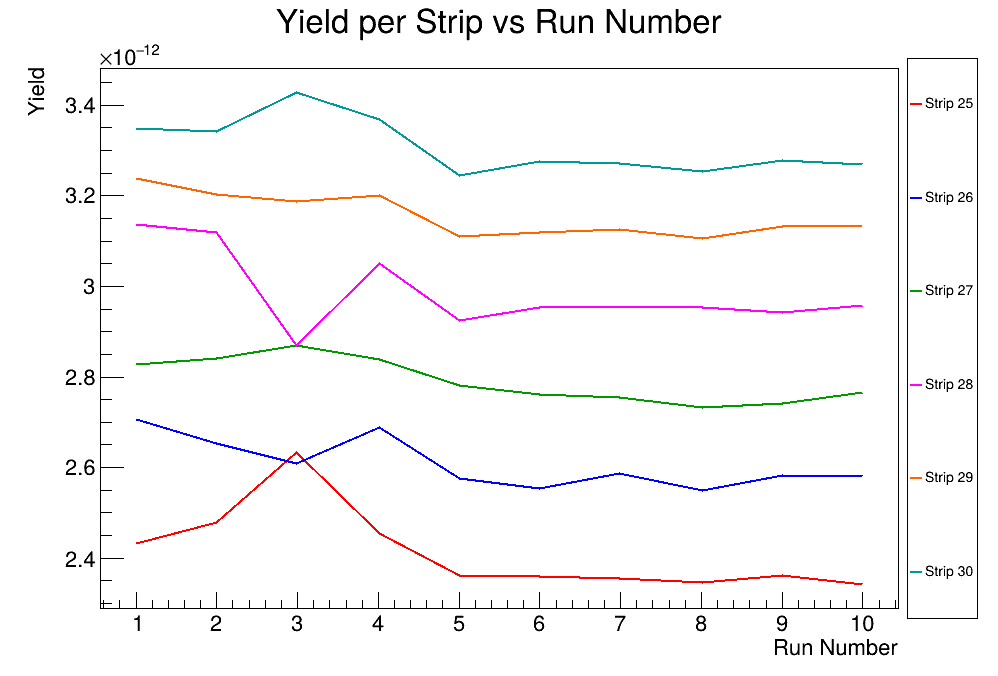
|
|
95
|
Mon Jul 21 10:30:01 2025 |
Selin | The 2D Energy Spectrum of Ca41 |
The 2D energy spectrum of Ca41 (36 runs). The expected alpha energies are 4.8 MeV (alpha_0) and 2.7 MeV (alpha_1). |
| Attachment 1: Screenshot_from_2025-07-21_08-51-09.png
|
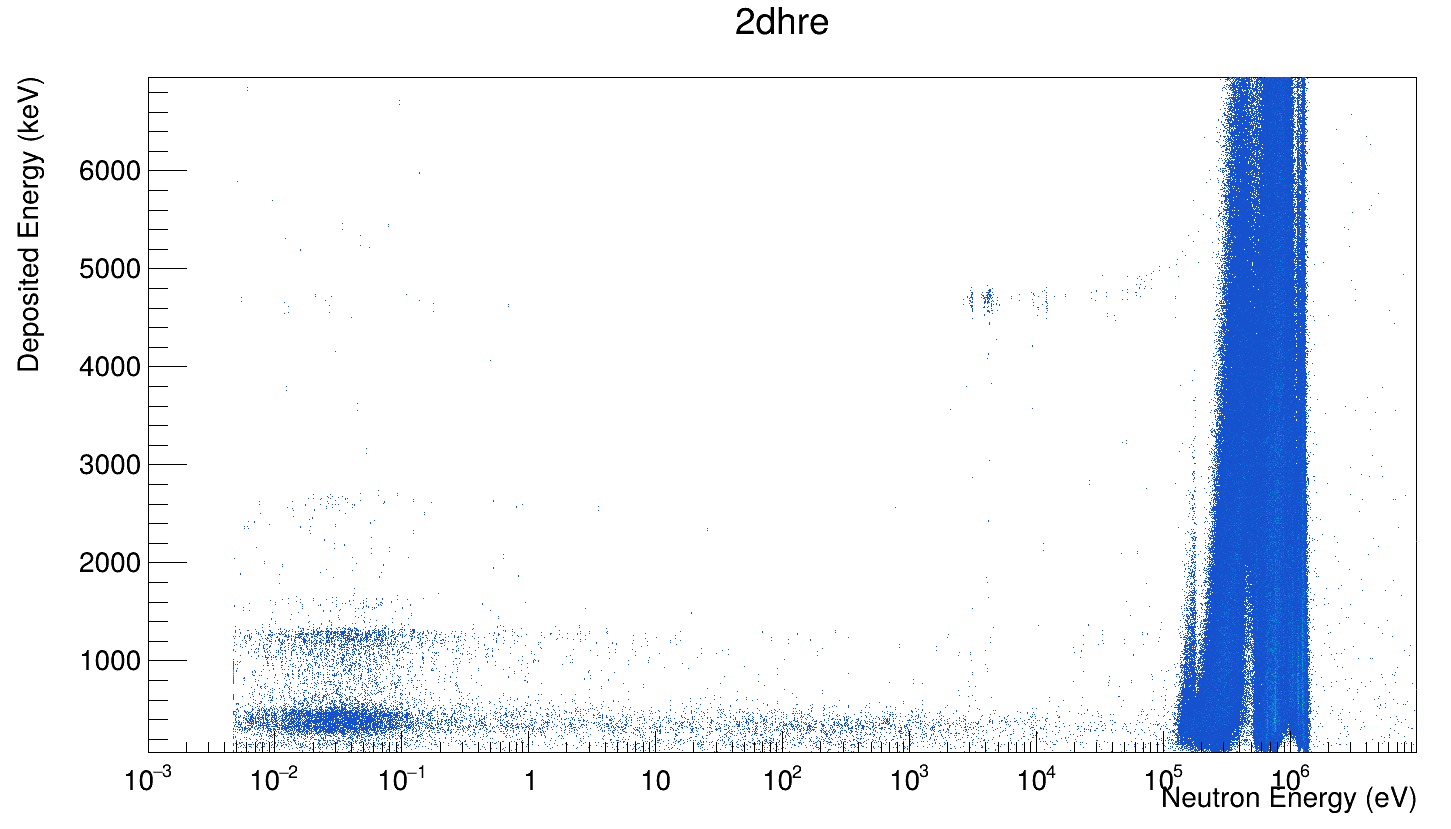
|
|
94
|
Fri Jul 18 12:04:36 2025 |
CLW | Presence at CERN |
Excel sheet for presence at CERN during 41Ca run. Please update if required.
https://docs.google.com/spreadsheets/d/19OzH7bpnHb-YeOskNBGlrhEkPZmDsPDw9y0tleU0Soo/edit?gid=0#gid=0 |
|
93
|
Wed Jul 16 13:56:00 2025 |
CLW | Links to photos and proton counting excel sheet |
Photos setup
Excel Sheet |
|
92
|
Wed Jul 16 11:45:39 2025 |
Selin | Boron Spectra Update After Setting Change + Pulser Removed |
Uncalibrated amplitude spectra of Boron (run221188) after the settings were changed, the pulser was removed, and the threshold in the UserInput has been lowered. Both alphas can be seen in the front and back strips. The ratios between the alphas are similar for front (0.066) and back (0.063) strips.
1- Uncalibrated amplitude spectra of strip 2.
2- 1- Uncalibrated amplitude spectra of strip 19. |
| Attachment 1: B_Strip2_ded.png
|
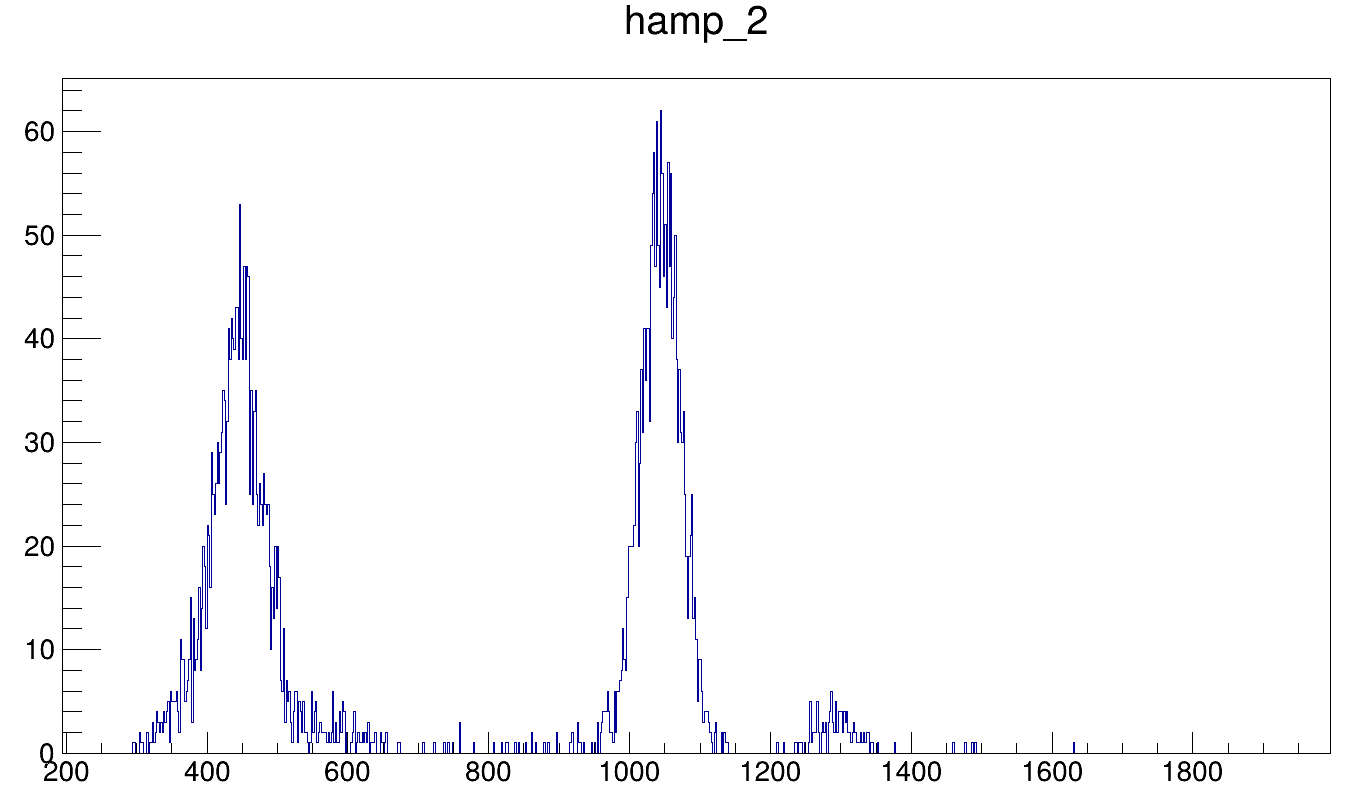
|
| Attachment 2: B_Strip19_ded.png
|
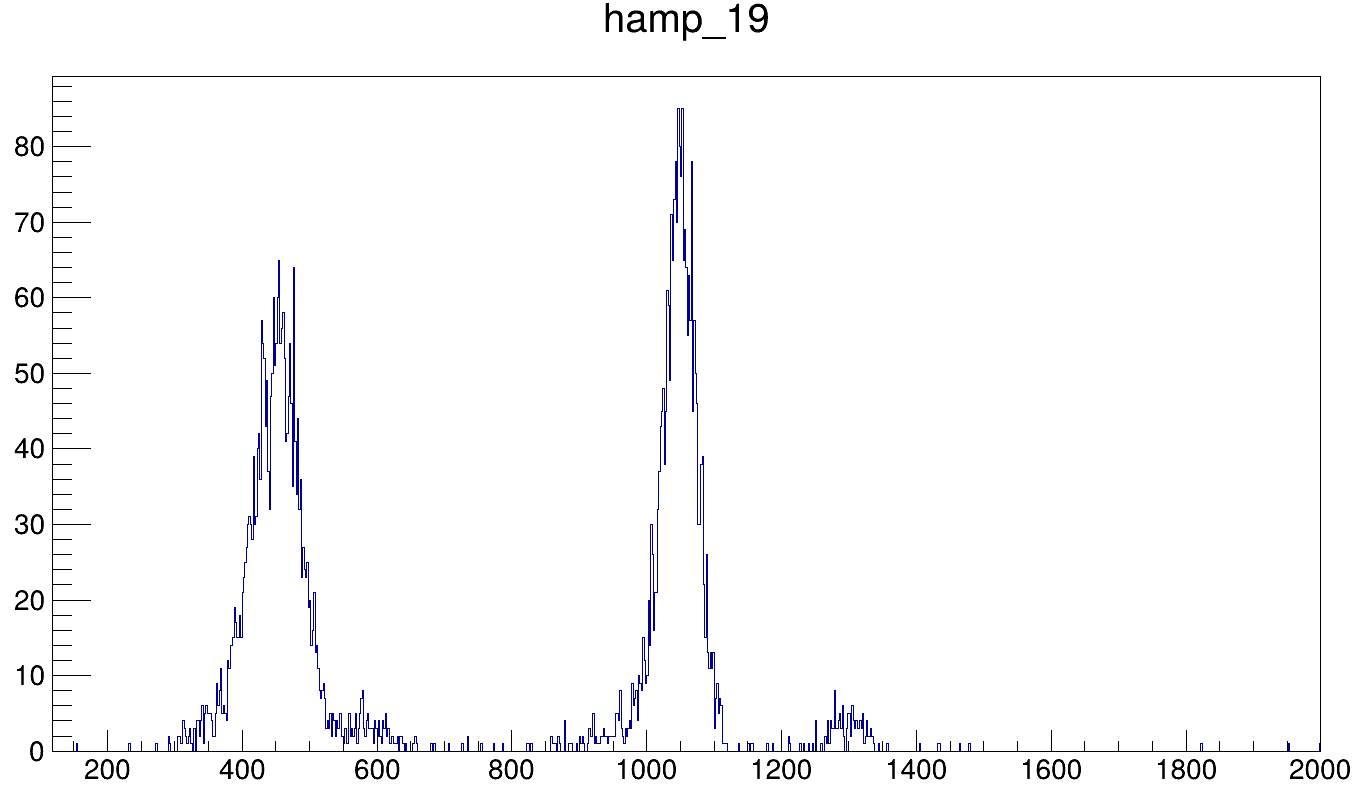
|
|
90
|
Wed Jul 16 08:55:22 2025 |
Selin | Run221141 Boron Uncalibrated Data |
Plots of Boron #1 run (221141) from the Ca41 campaign with the right voltage applied (11.07.2025).
1- Uncalibrated amplitude spectra of strip 1 (dedicated).
2- Uncalibrated 2d energy plot of Boron dedicated data.
3- Uncalibrated amplitude spectra of strip 22 (dedicated). The alpha-0 on the back strips has lower counts. |
| Attachment 1: B_Strip1.png
|
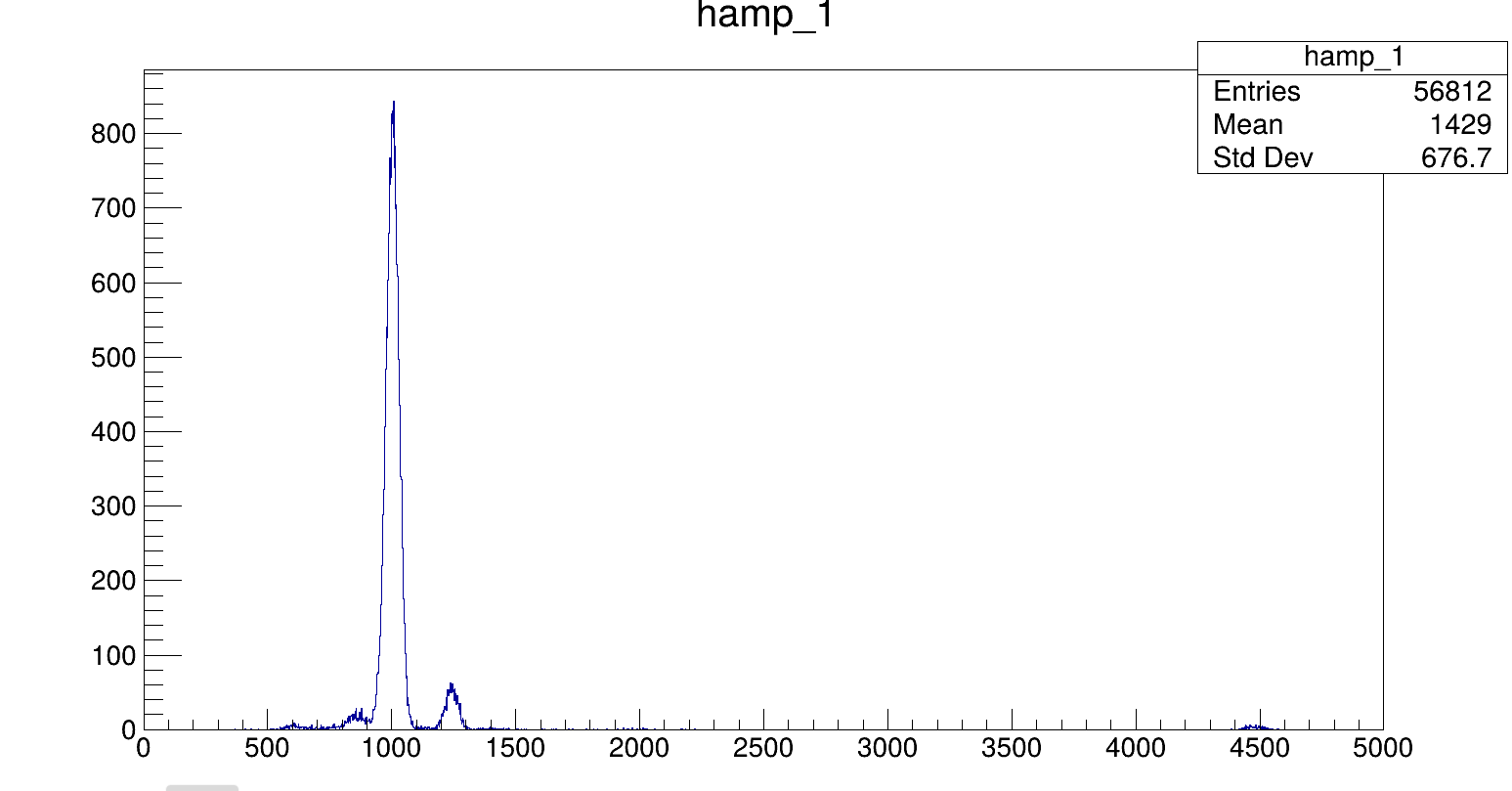
|
| Attachment 2: B_ded_2d.png
|
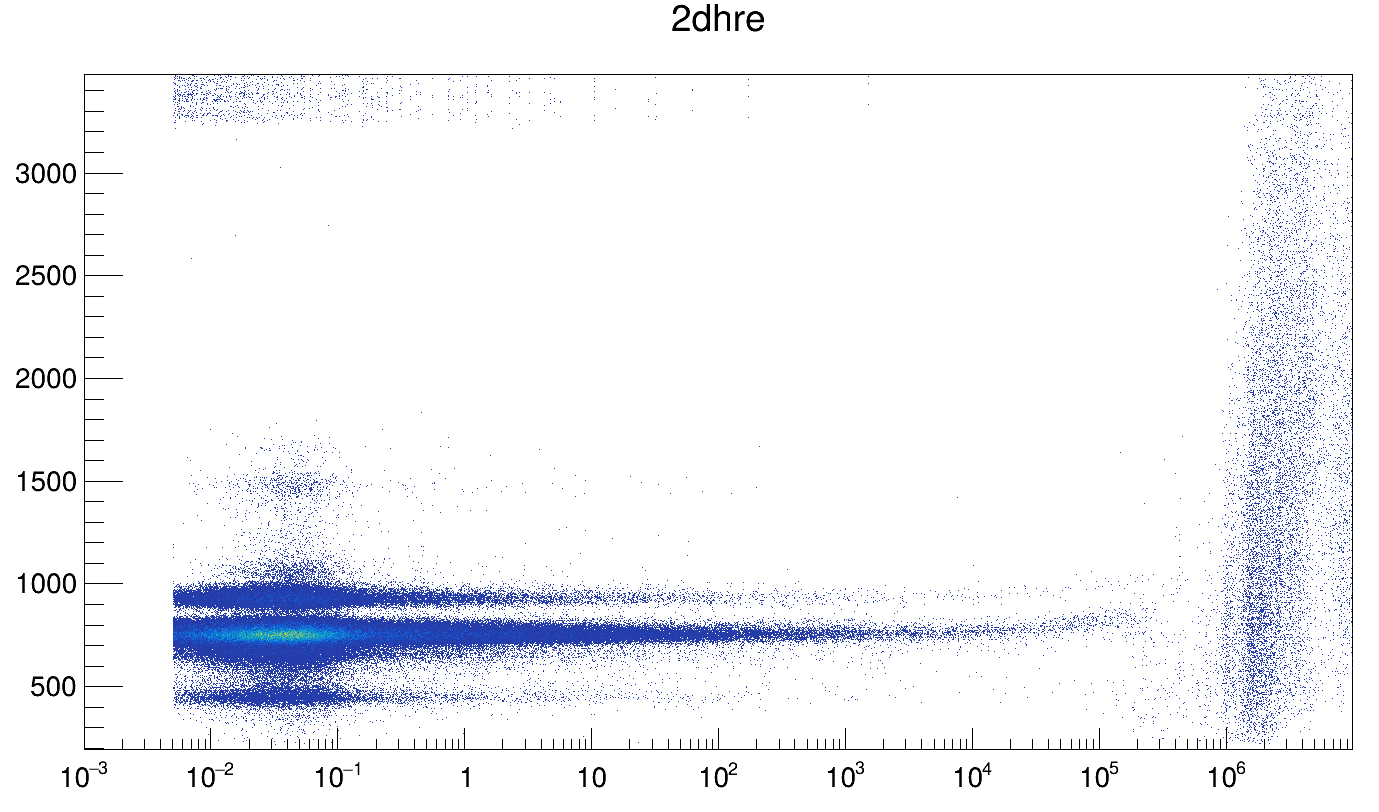
|
| Attachment 3: B_Strip22.png
|
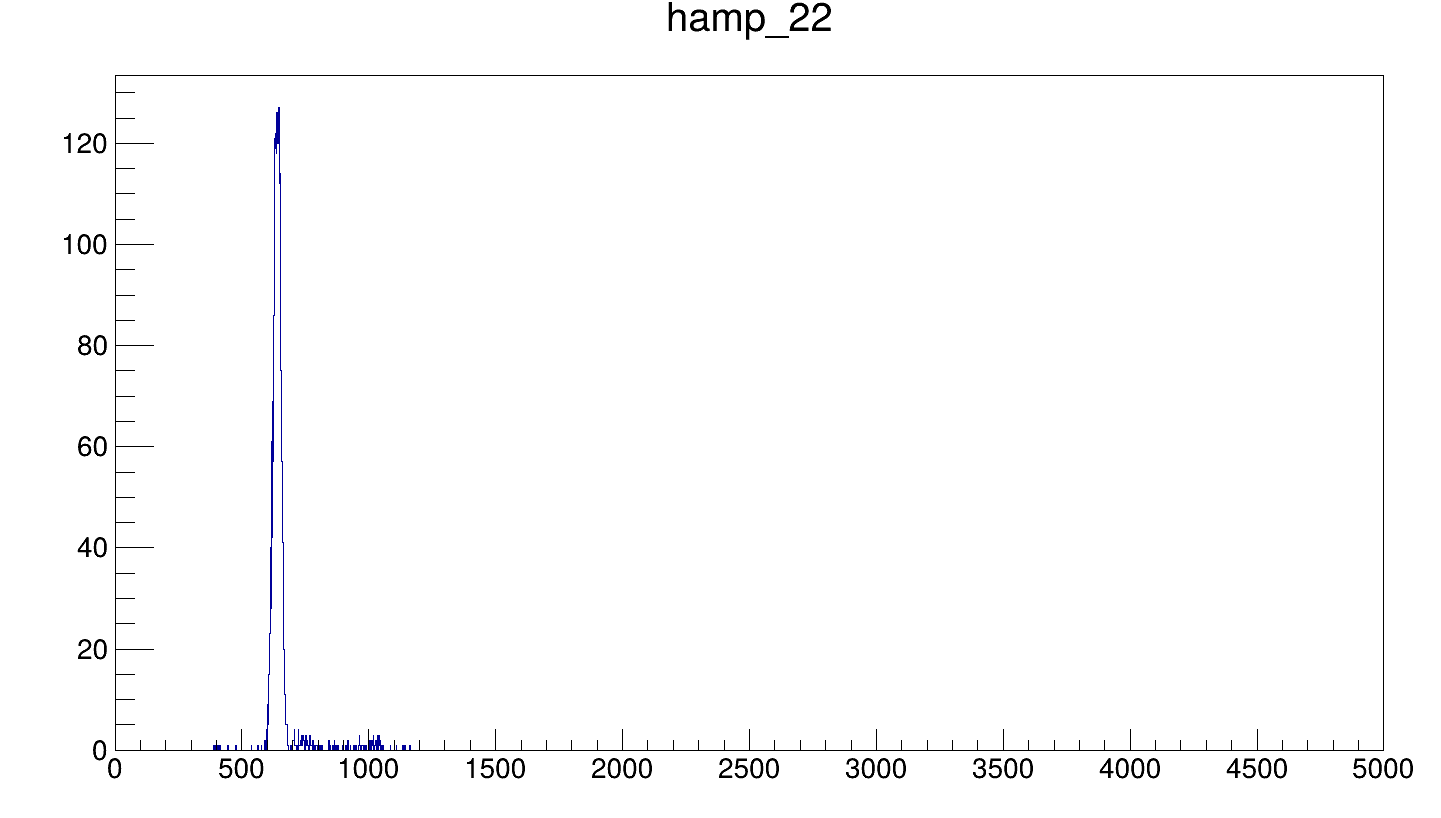
|
|
89
|
Wed Jul 16 08:51:06 2025 |
Selin | Run221136 Lithium Uncalibrated Data |
Plots of Lithium #3 run (221136) from the Ca41 campaign with the right voltage applied (11.07.2025).
1- Uncalibrated amplitude spectra of strip 1 (dedicated).
2- Uncalibrated amplitude spectra of strip 1 (parasitic).
3- Uncalibrated 2d energy plot of Lithium dedicated data. |
| Attachment 1: Li_Strip1.png
|
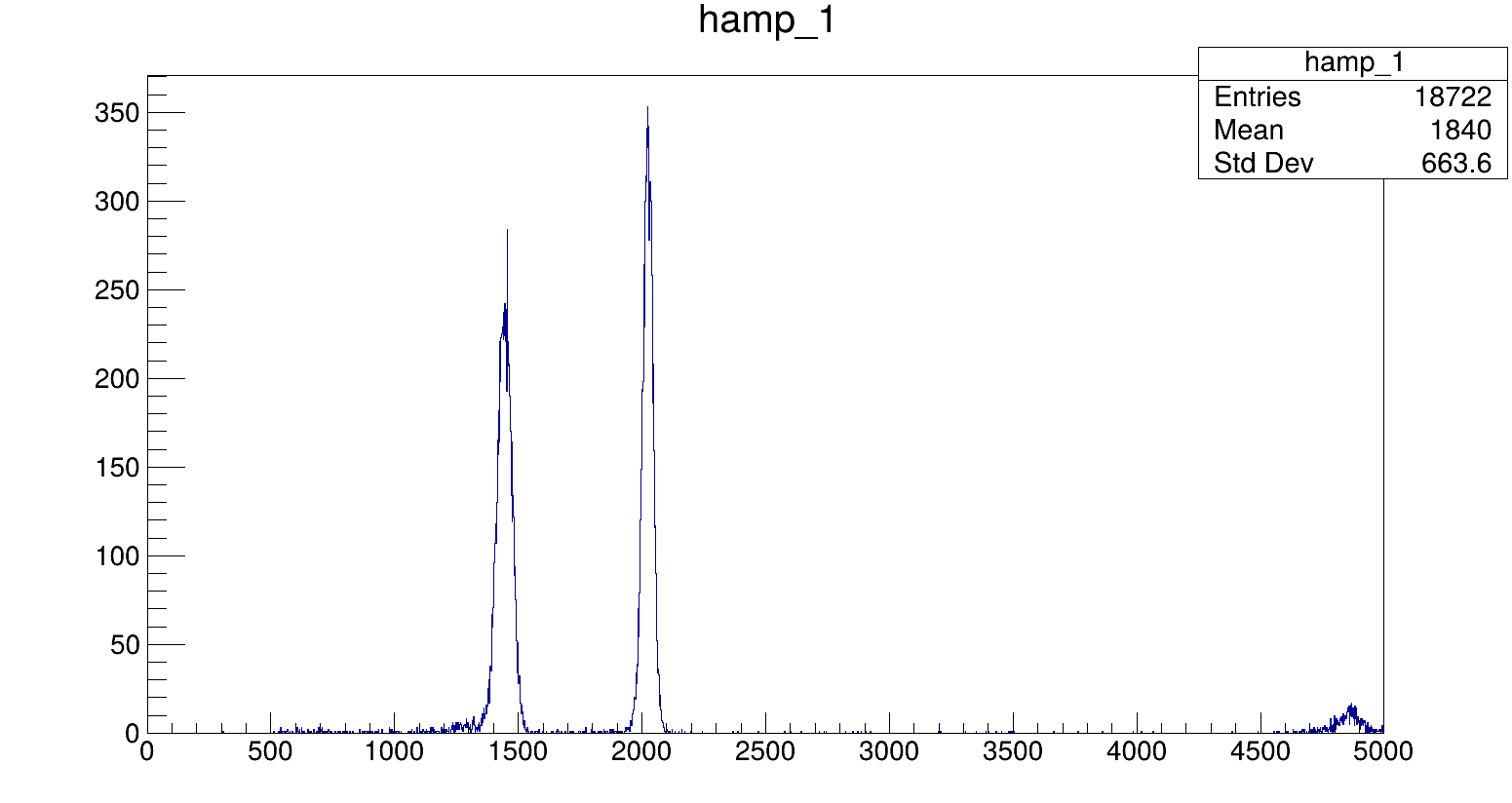
|
| Attachment 2: Li_Strip1_Par.png
|
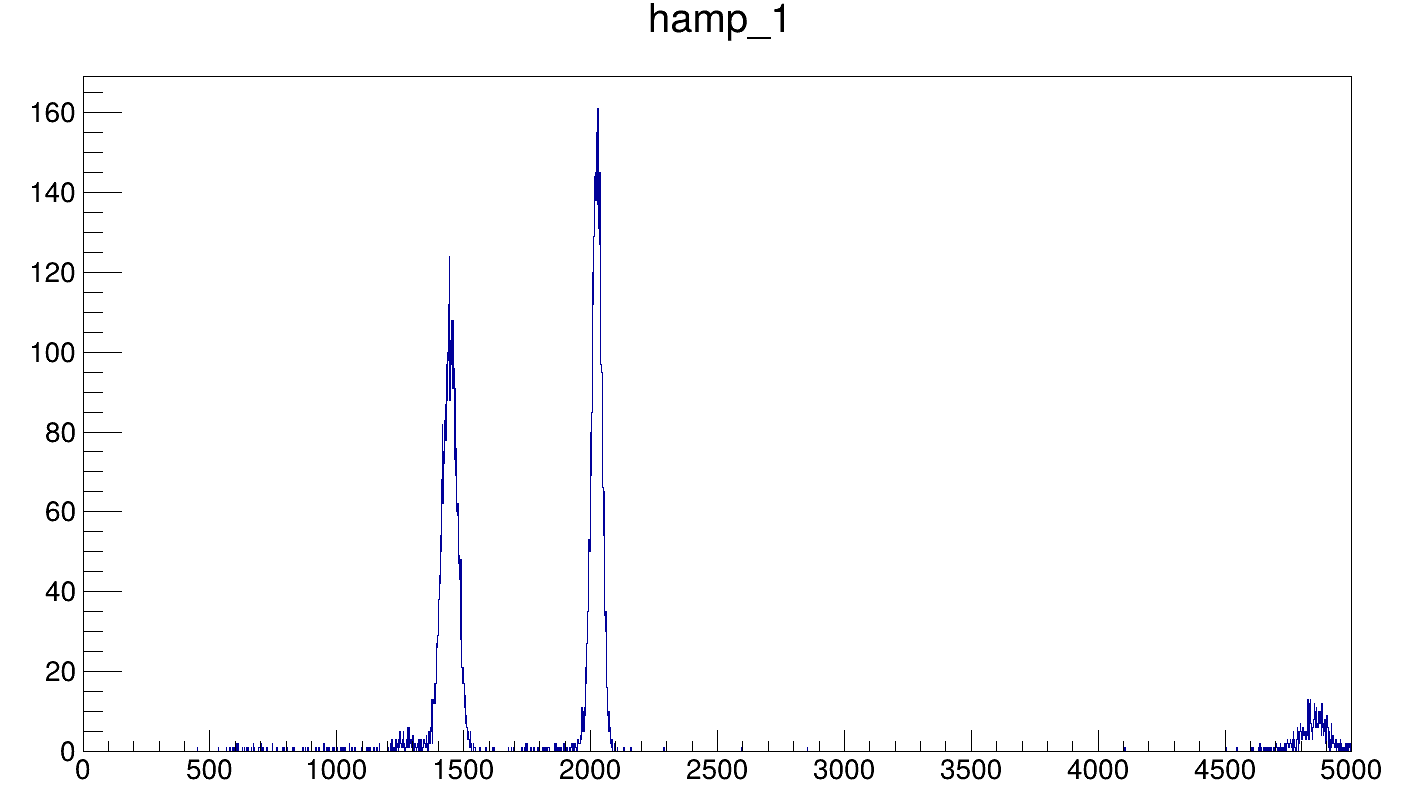
|
| Attachment 3: Li_ded_2d.png
|

|
|
88
|
Sat Jul 12 11:34:31 2025 |
Selin | Detector-Cable Connections |
List of the detectors and the connections. |
| Attachment 1: Detector-Cable.pdf
|
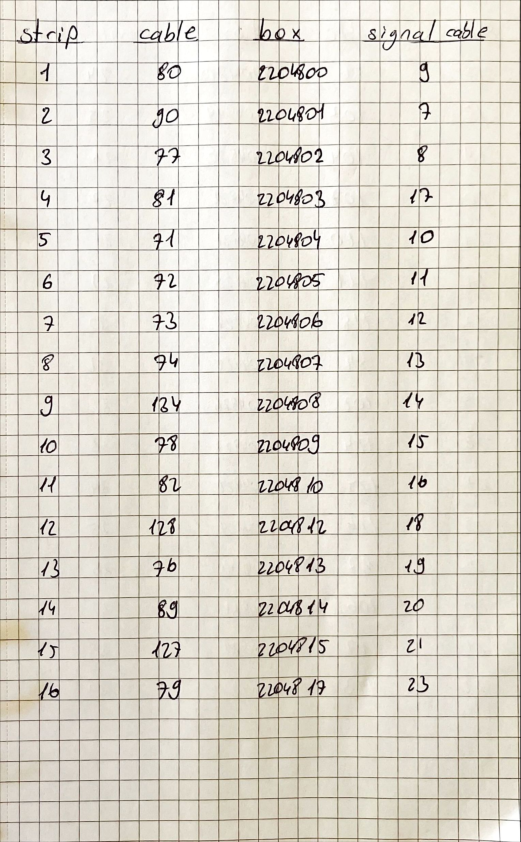
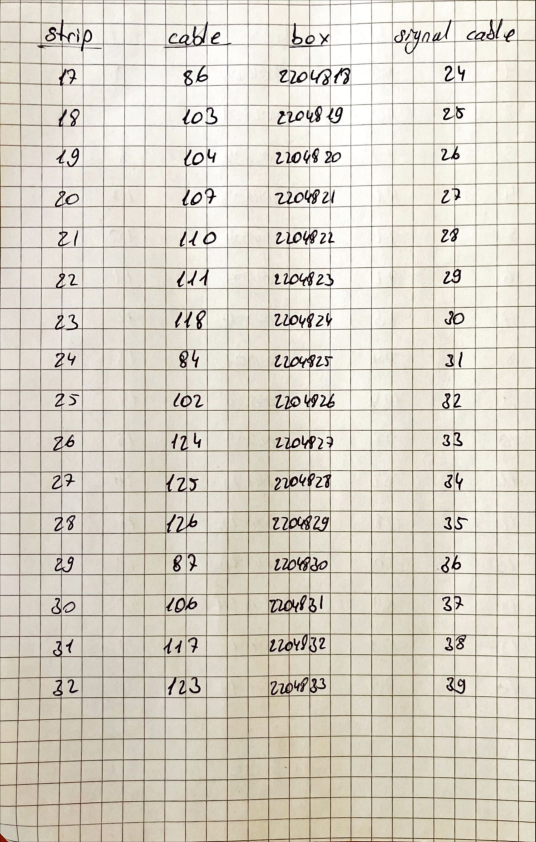
|
|
87
|
Sat Jul 12 11:25:35 2025 |
Selin | The Detector Bias-Leakage Current Data |
This Excel sheet has the detector bias-leakage current data and plot for both detectors.
Detector 2 has lower leakage current and a flatter plateau region. |
| Attachment 1: Ca-VoltageCurrent.xlsx
|
|
86
|
Sat Jul 12 10:30:06 2025 |
Francisco Garc�a Infantes | Report Experimental SetUp Ca41 |
I'm attaching a report for the experimental setup so far.
There is a main problem which haven't been solved yet and I don't know if that can cause problem in the future analysis.
Channels #23, #24, #31 and #32 are not working well. The signal os these channels look attenuated from the pulser, make impossible to see then in the Boron run.
As these channels are in the back side of the detector, it could be possible to run like? Unless we have more ideas about to solve the problem.
The front channels work well all of them, and the rest of the back channels work well as well.
I attach the current for the +15 and -15 volt applied to the PreAmp (low voltage) and the leakage current from the detector is 0.1 uA. |
| Attachment 1: Experimental_Setup_Ca41.pdf
|
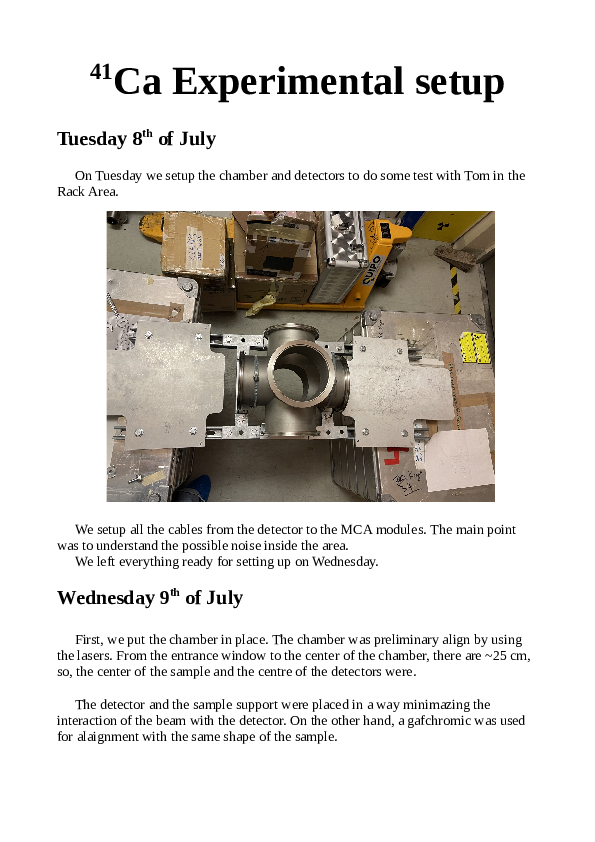



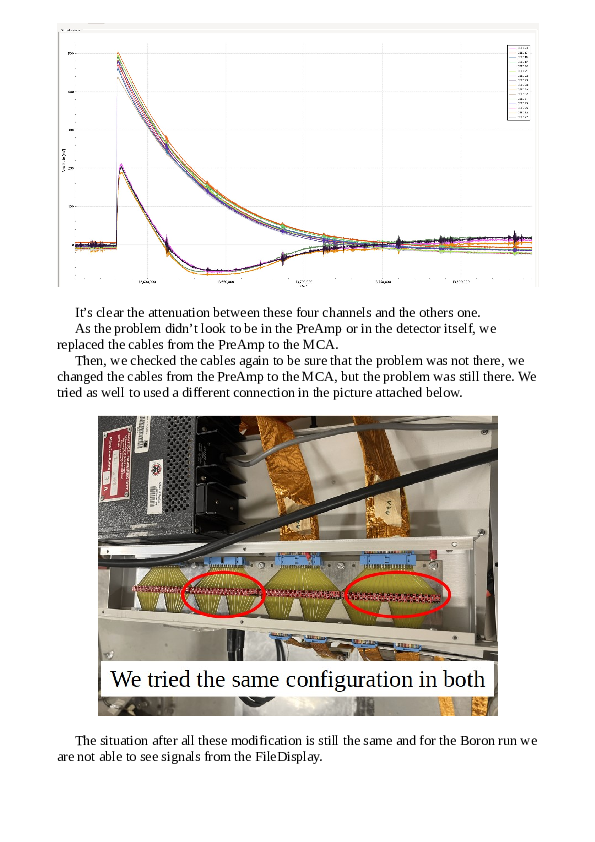
|
| Attachment 2: Current_Value_Voltage_-15.jpeg
|
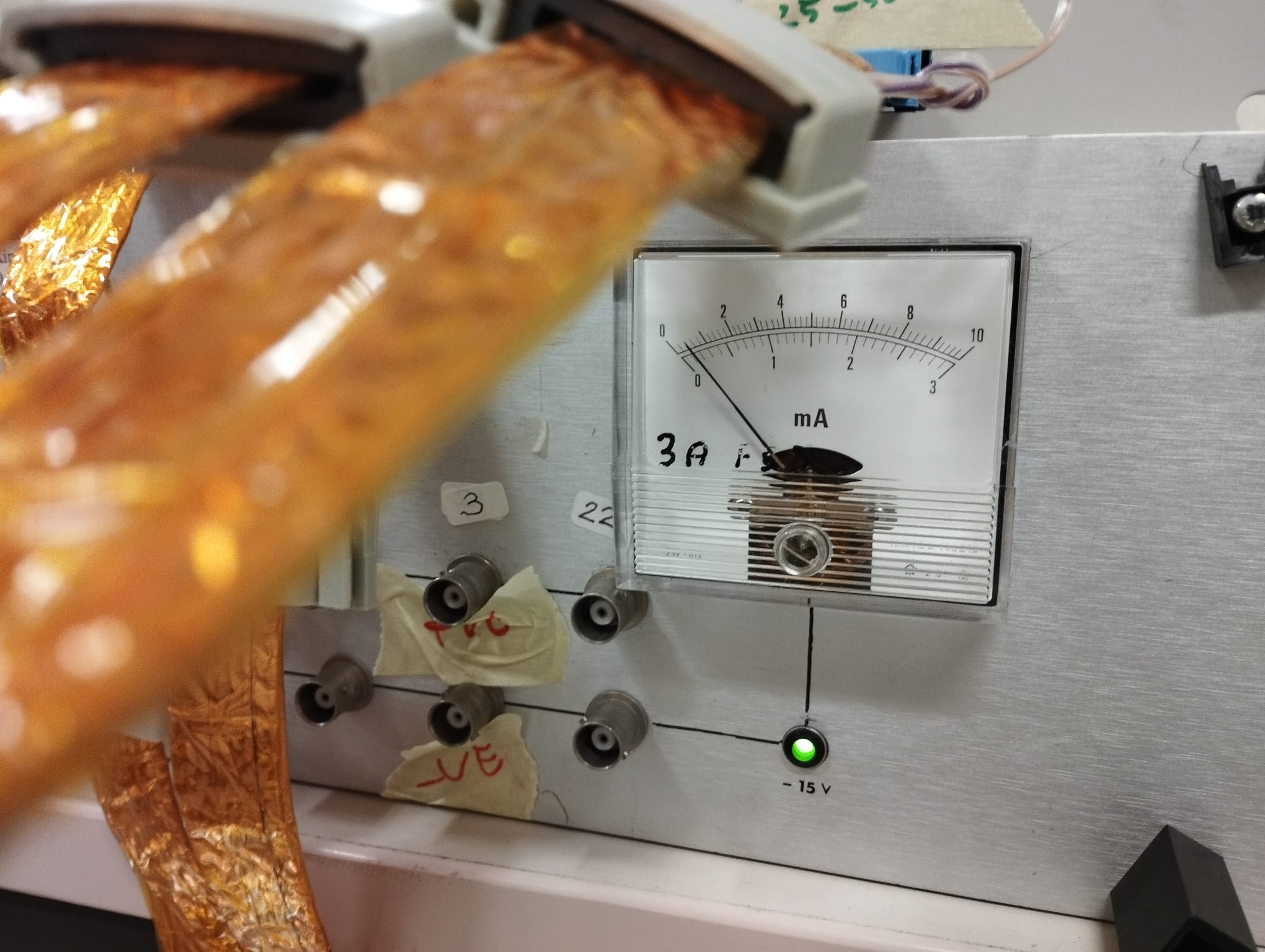
|
| Attachment 3: Current_Value_Voltage_15.jpeg
|
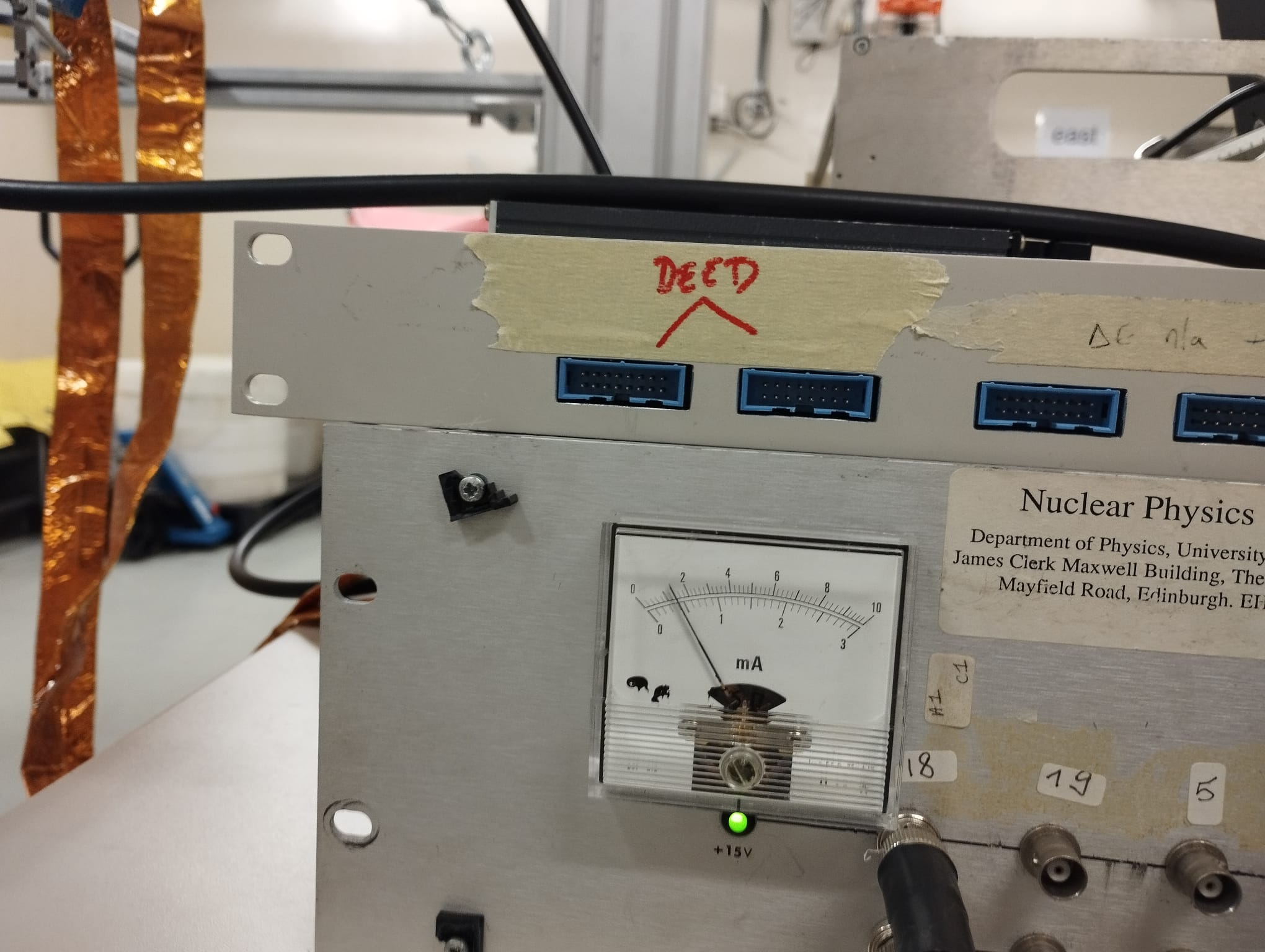
|
| Attachment 4: Leakage_Current_Detector.jpeg
|
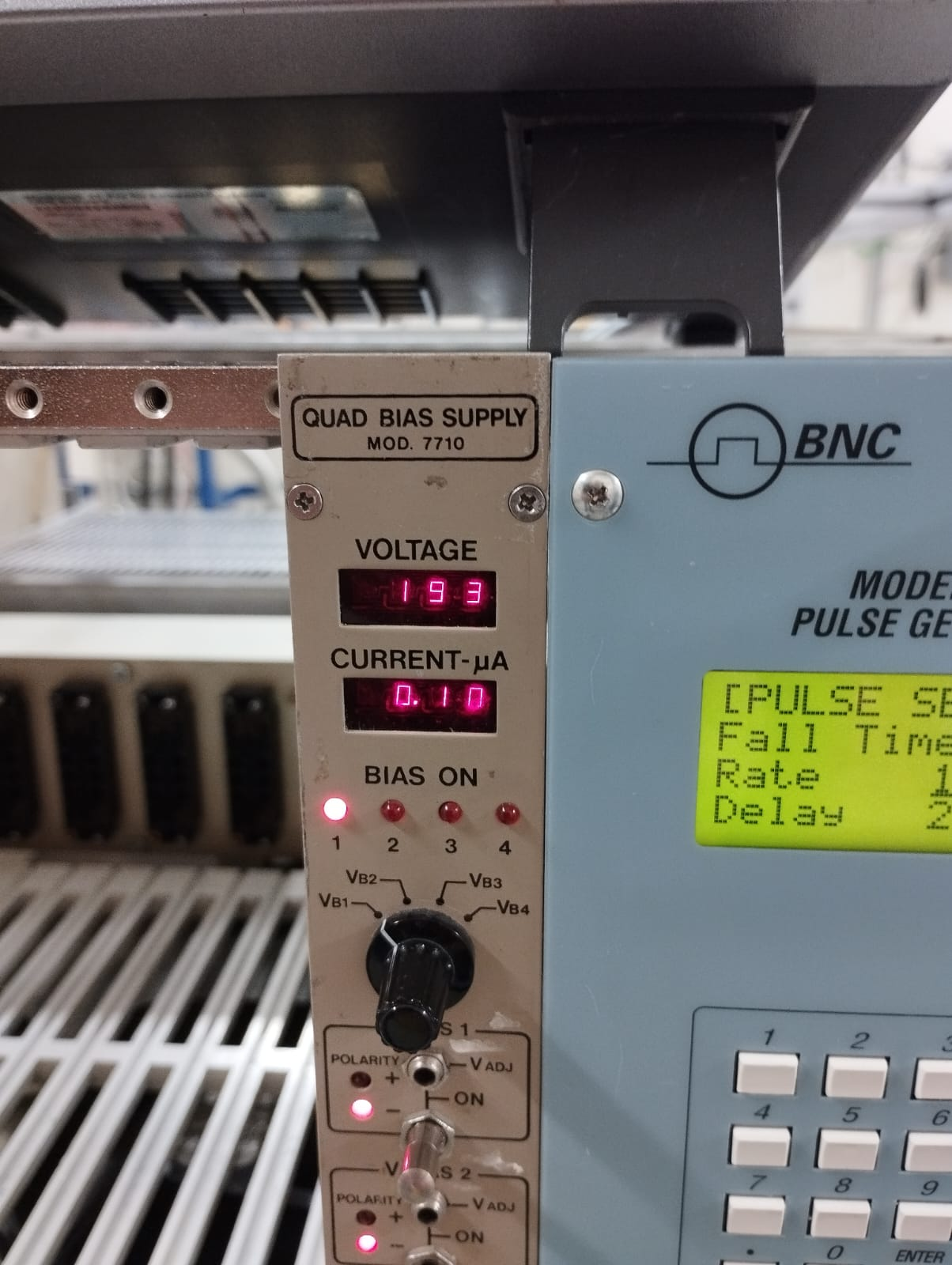
|
|
85
|
Fri Jul 11 09:16:18 2025 |
TD | Silena 7710 Quad Bias Supply manual and internal configuration |
Manual - see attachment 1
Internal configuration
Voltage full scale - 400V/10uA
JP1/1-4 fitted
JP4 fitted *see note below
DVM card JP1 AB
HV jumpers AB
Current readout resolution - 10nA
DVM card JP2 LM
JP5/1-5 GH
Polarity - channels 1-4 negative
Note with channel 1 voltage set to -180V the output voltage measured by DMM is -40V.
The output impedance of the Silena 7710 outputs may be comparable to the input impedance of the DMM (DMM typically c. 20-40M) so the measured voltage will be a *lower*
limit.
With JP4 removed (per manual instructions for voltage full scale 400V/10uA) the front panel reads -20V with an output voltage measured by DMM of -40V.
Again, the measured voltage will be a lower limit.
By observation of the behaviour of the electronic noise of p+n junction and n+n Ohmic strips as a function of bias for MSL type W1 DSSSD 3353-4 (75um) the voltage
applied to the DSSSD is > depletion.
MSL QA tests report depletion voltage 28V and test/operating voltage 28+10V = 38V. |
| Attachment 1: Silena_7710_quad_bias_supply.pdf
|
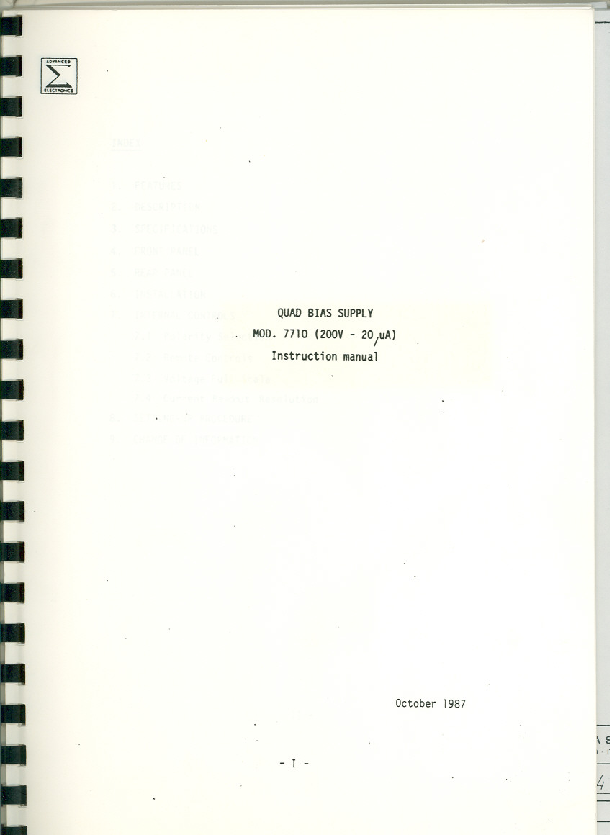
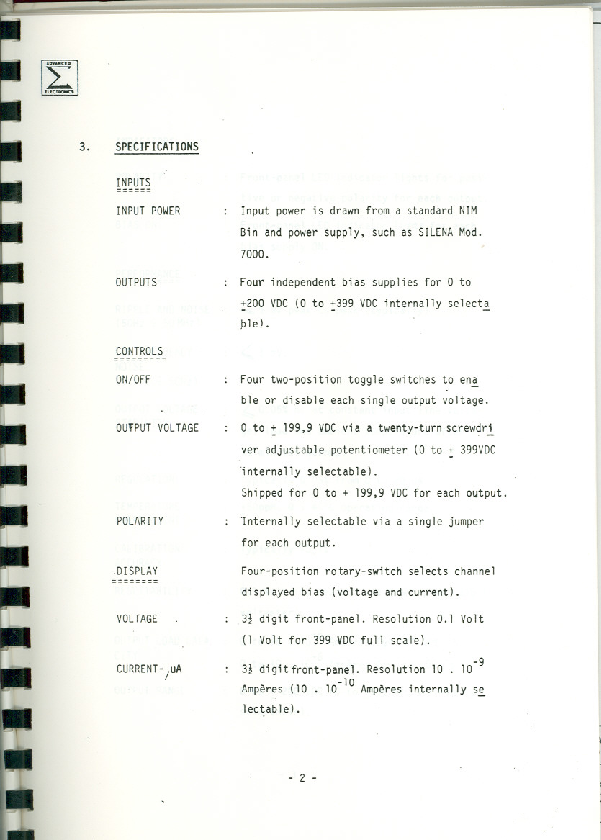
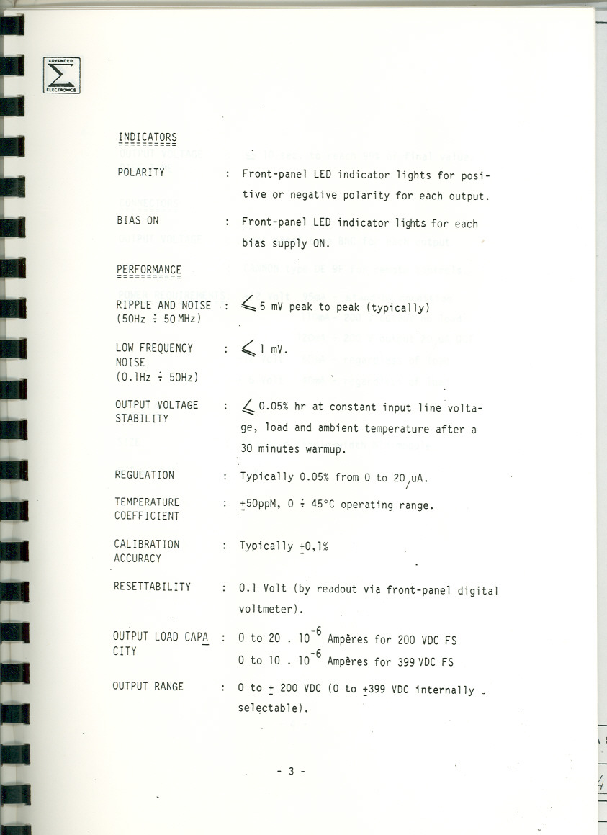
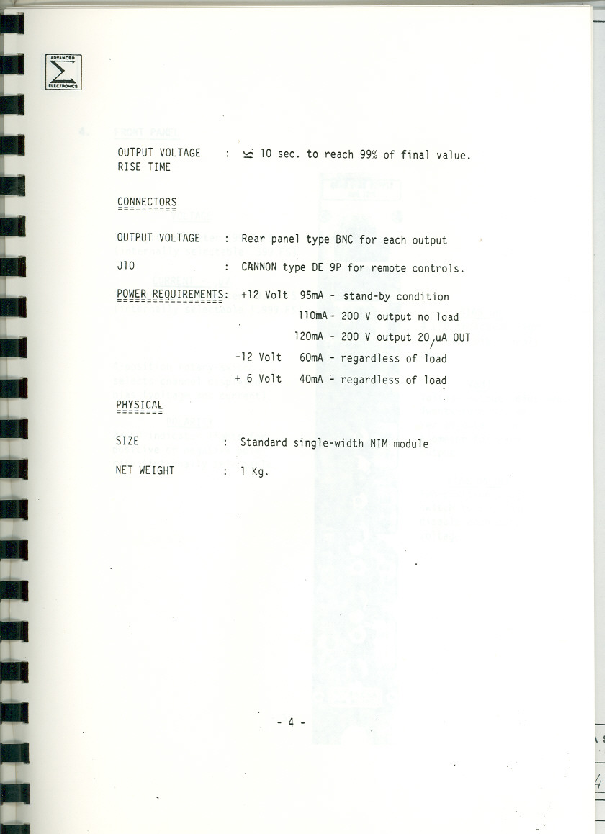
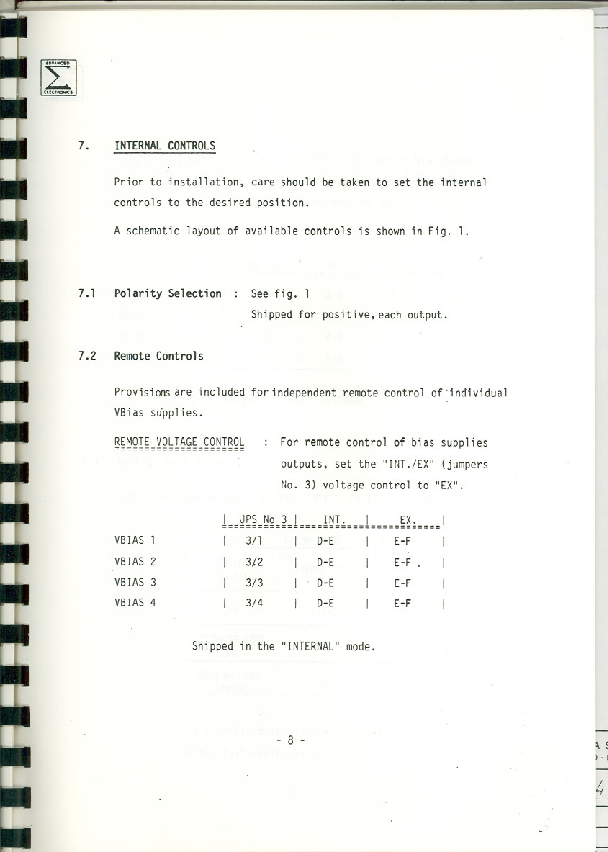
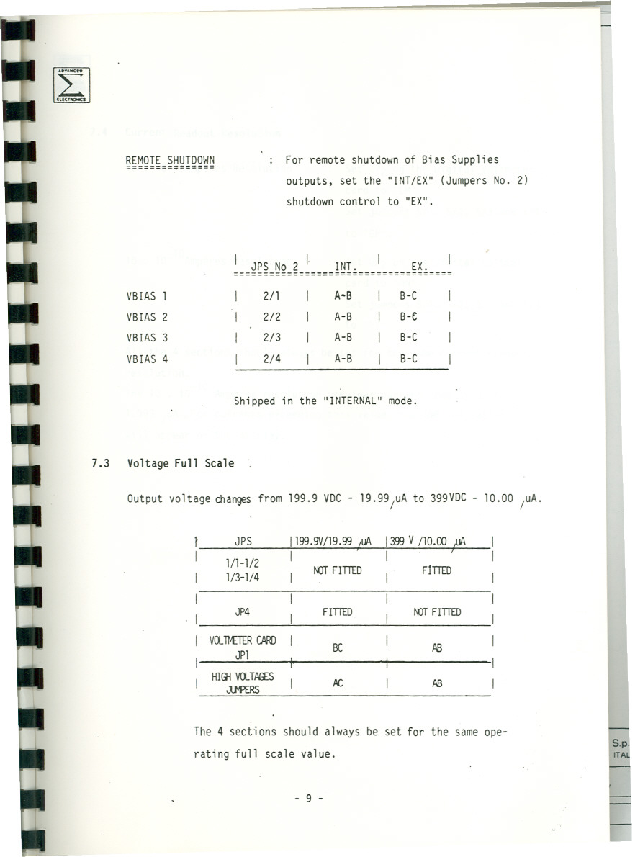
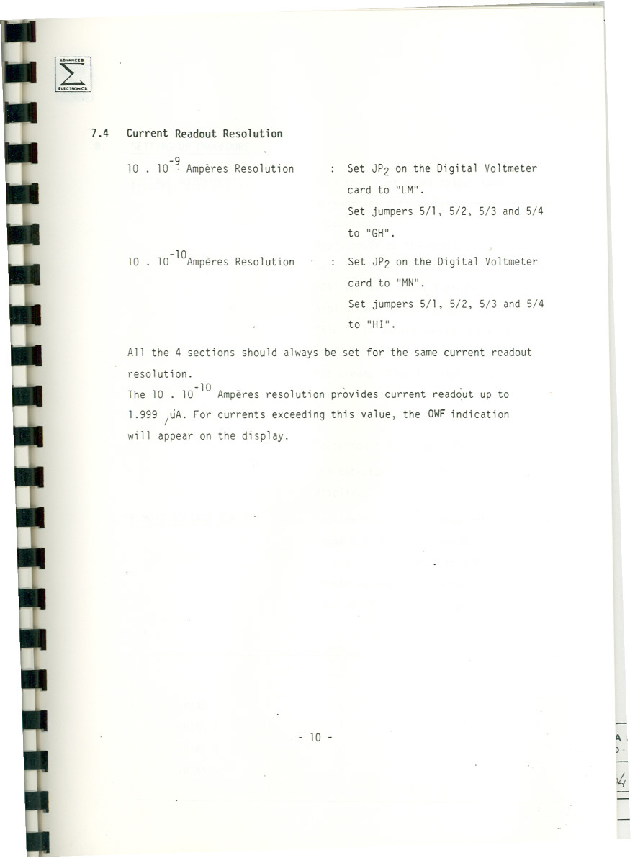
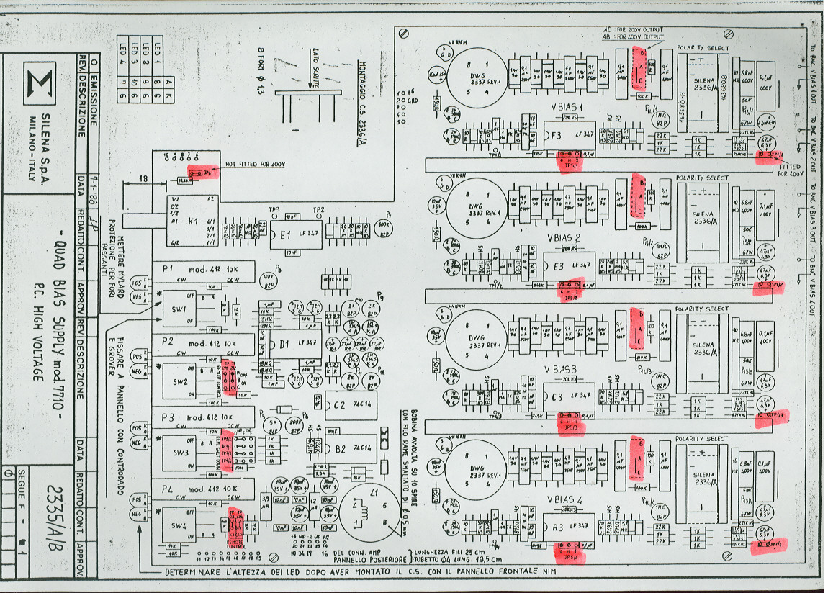
|